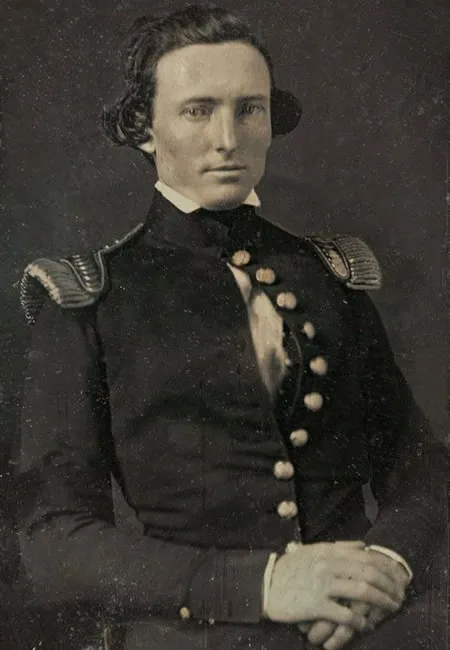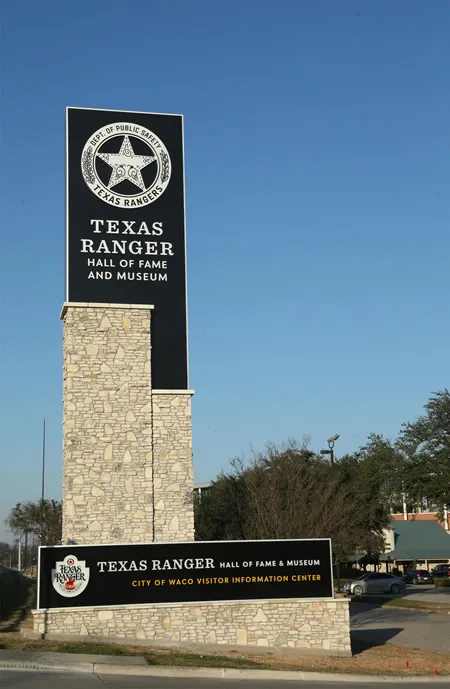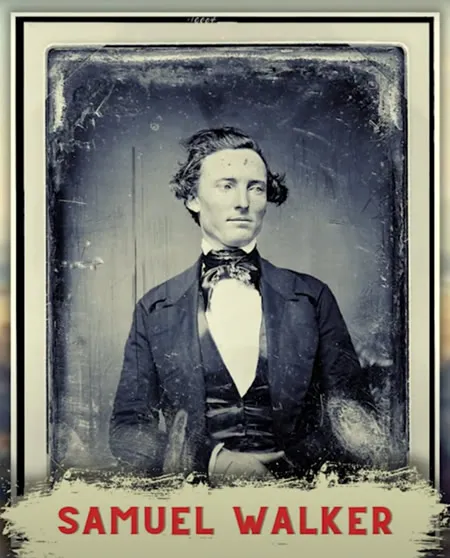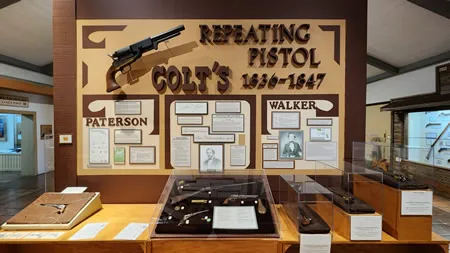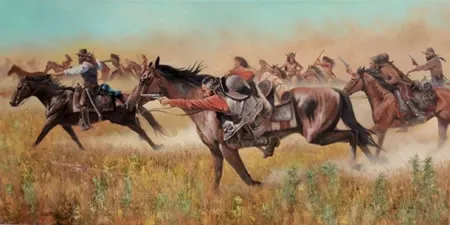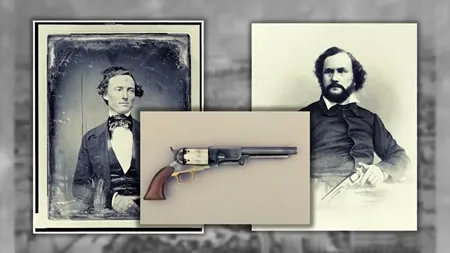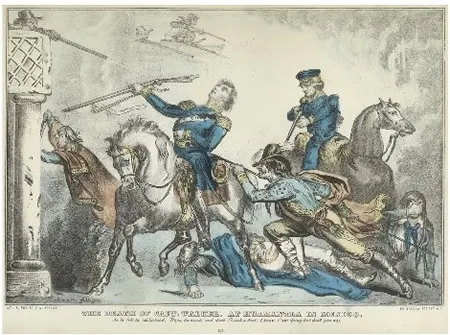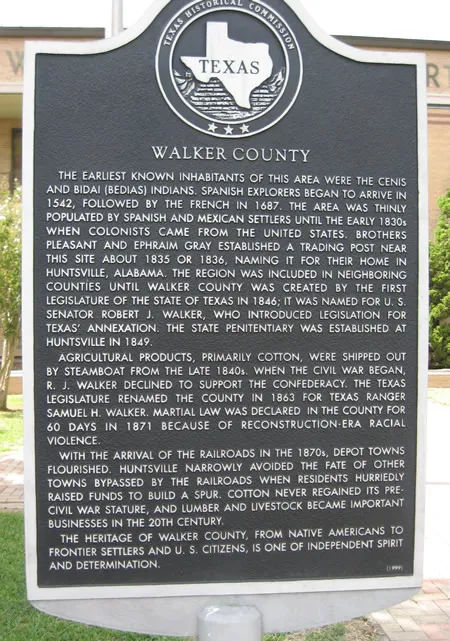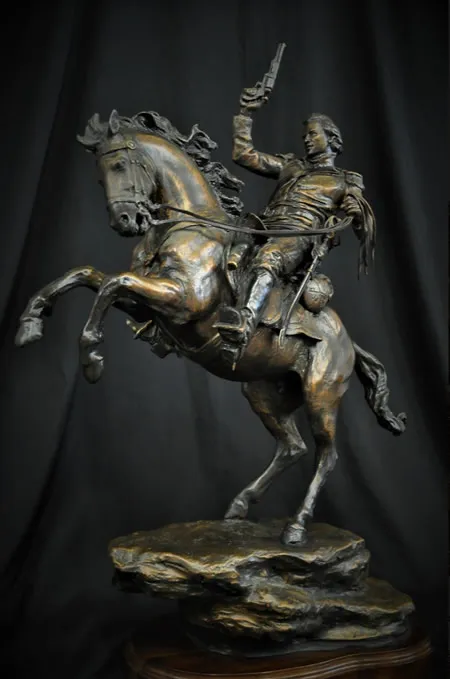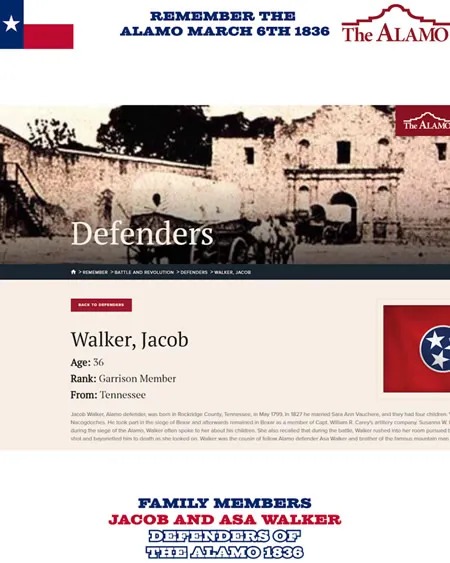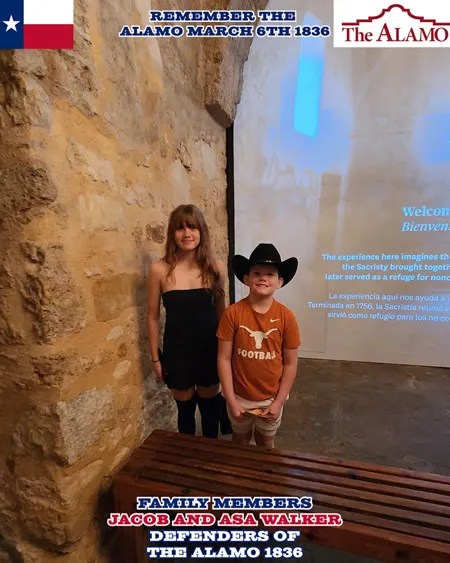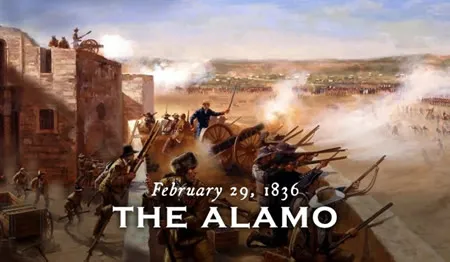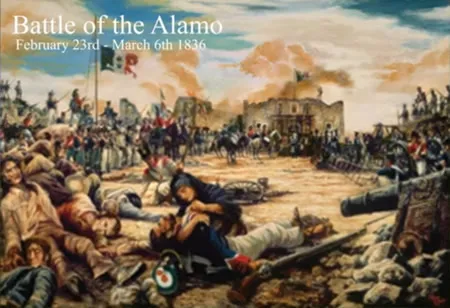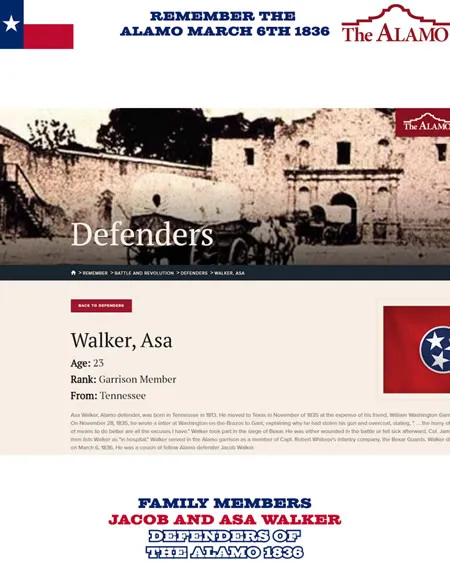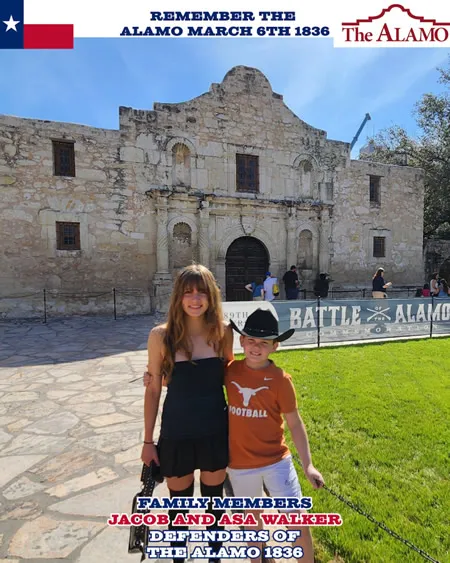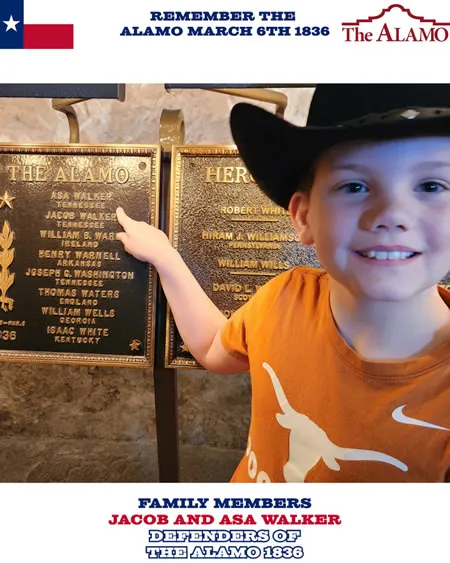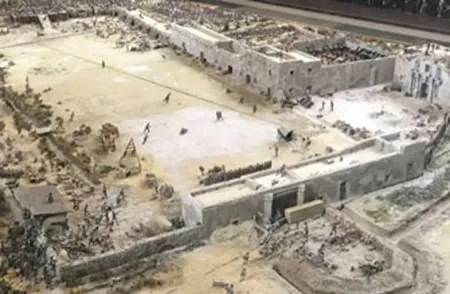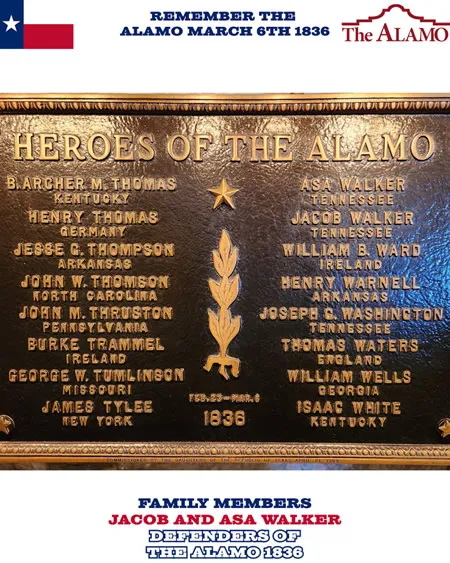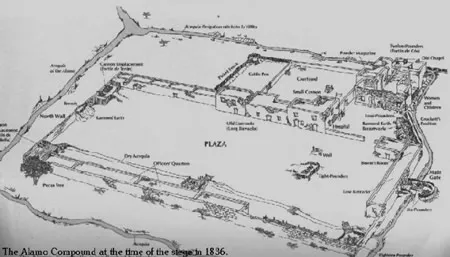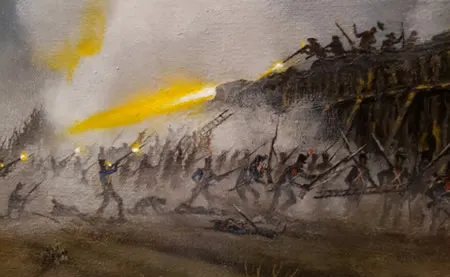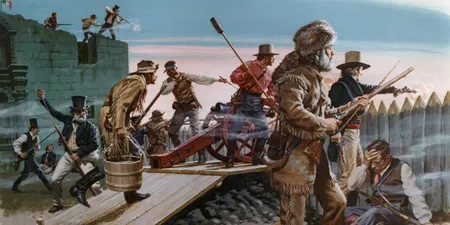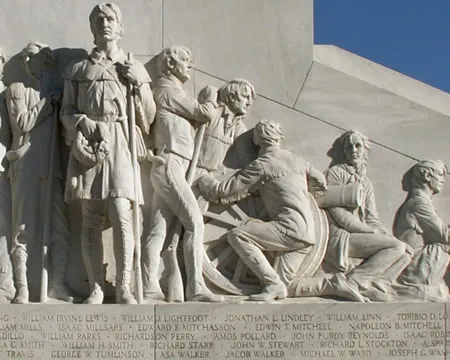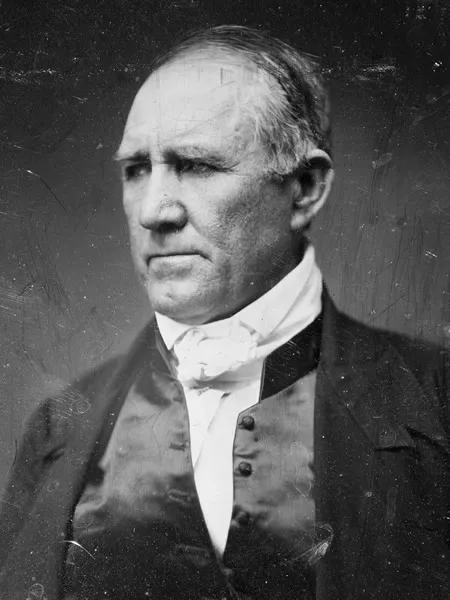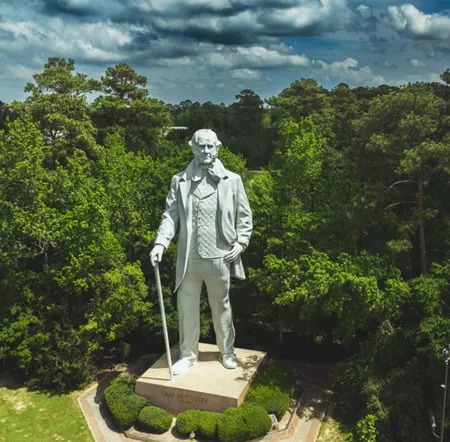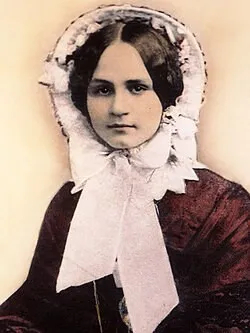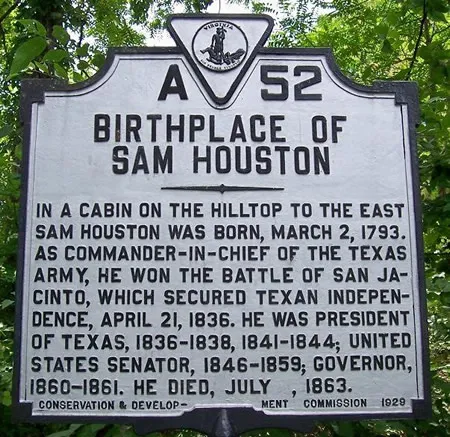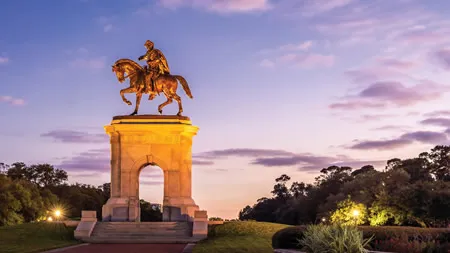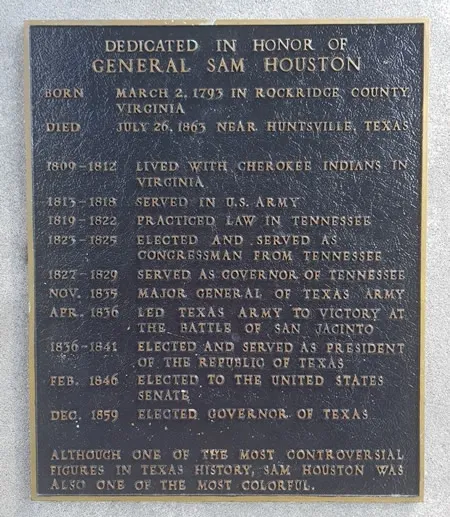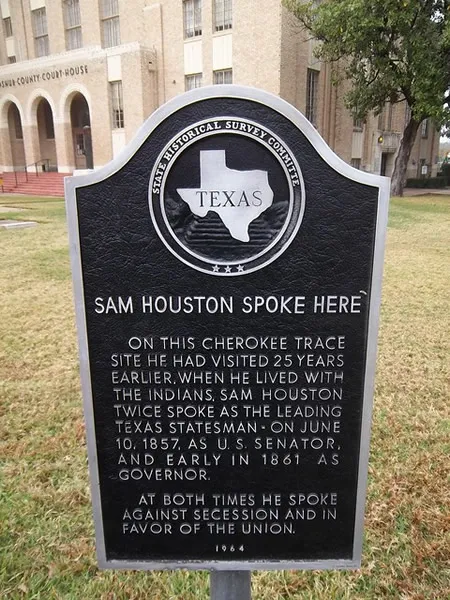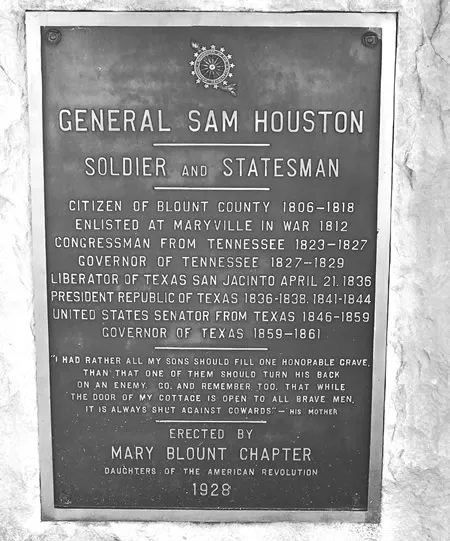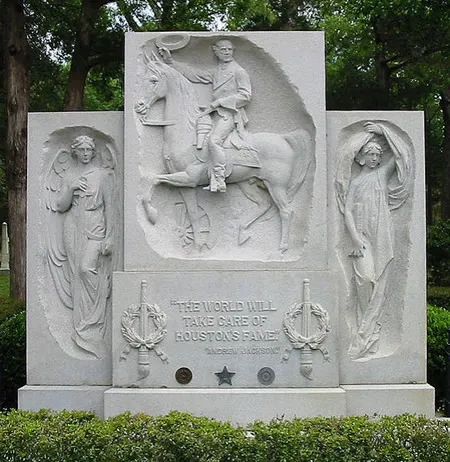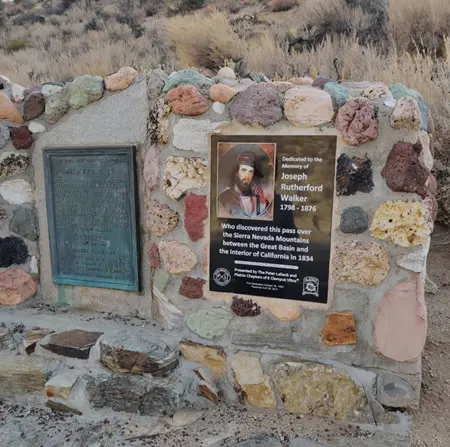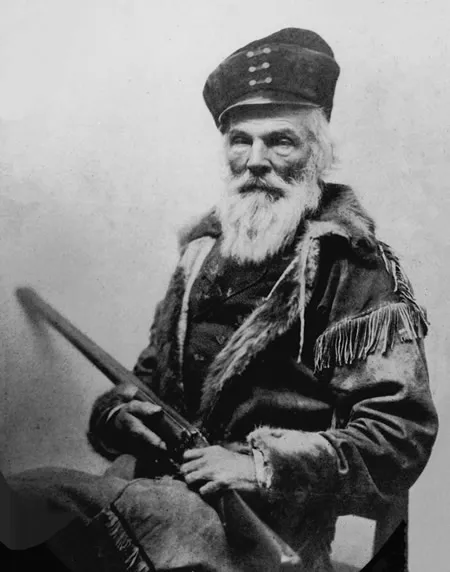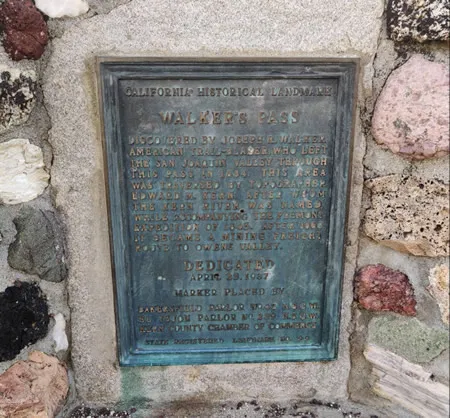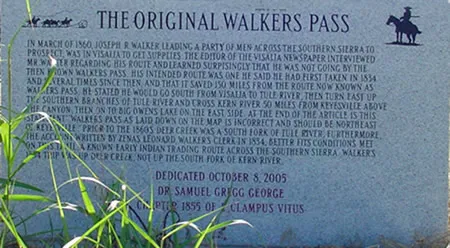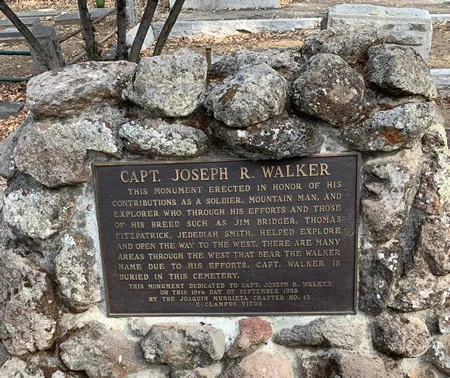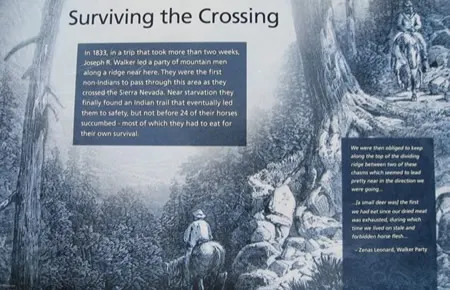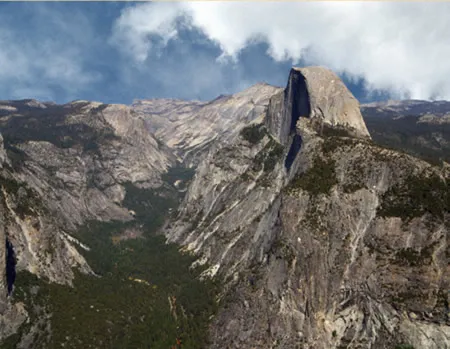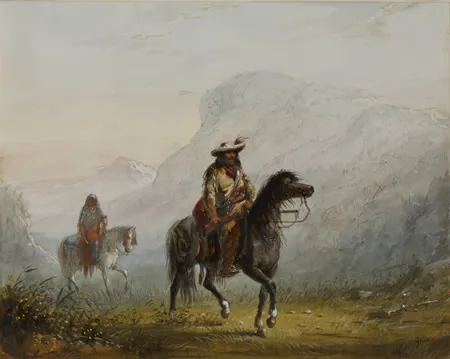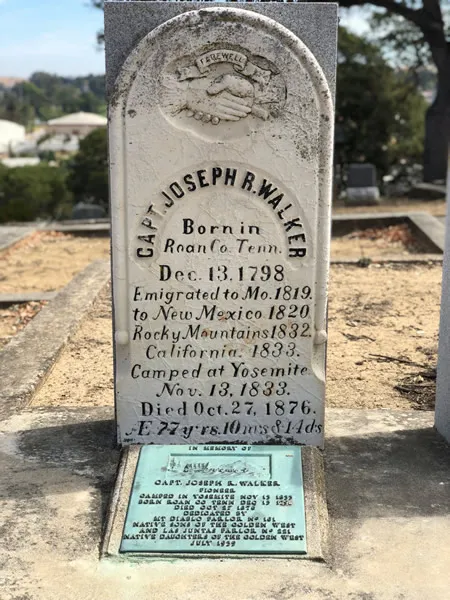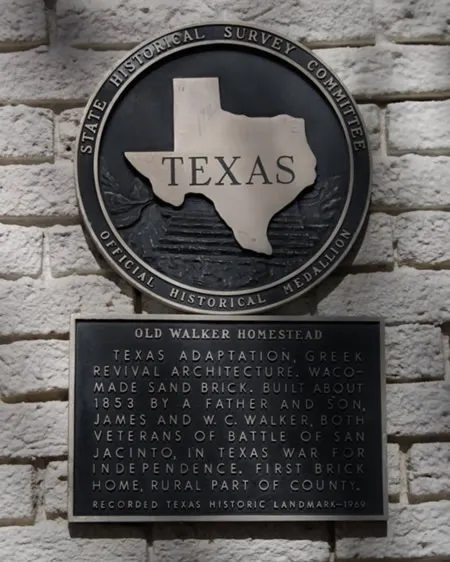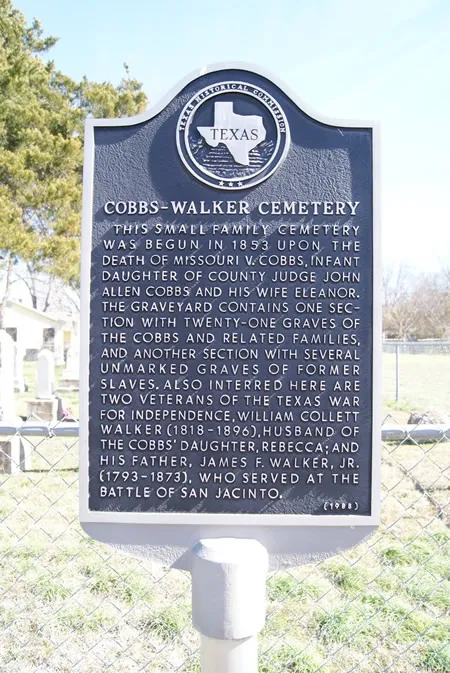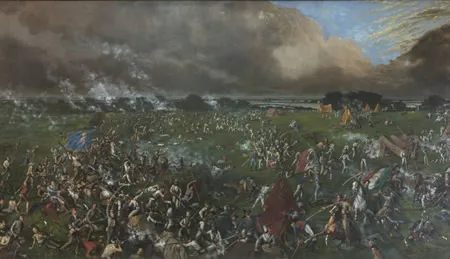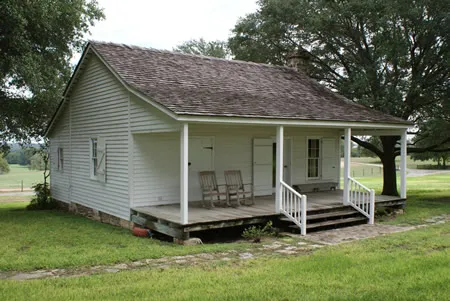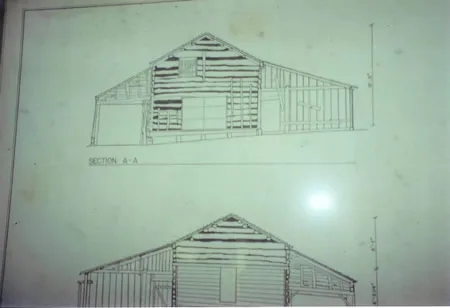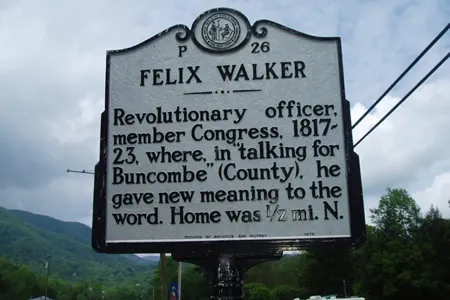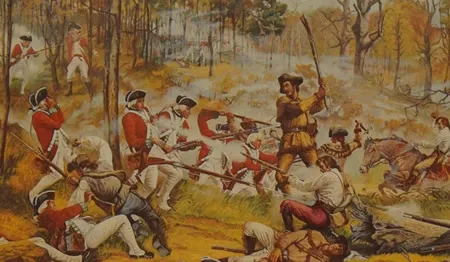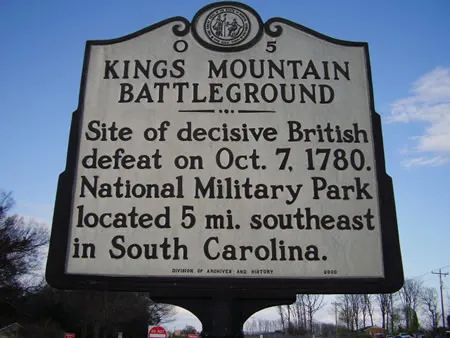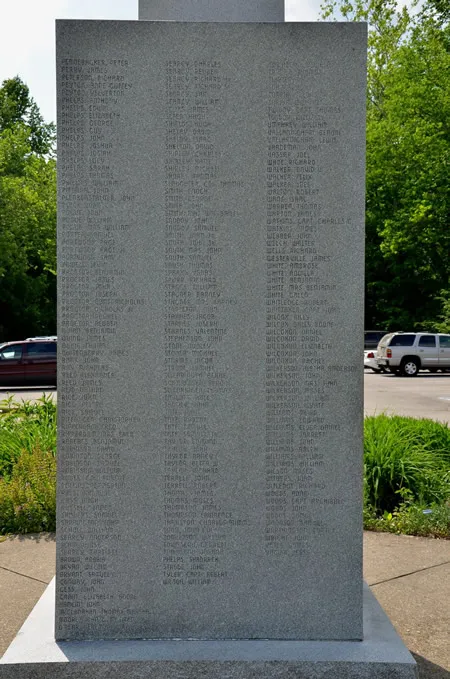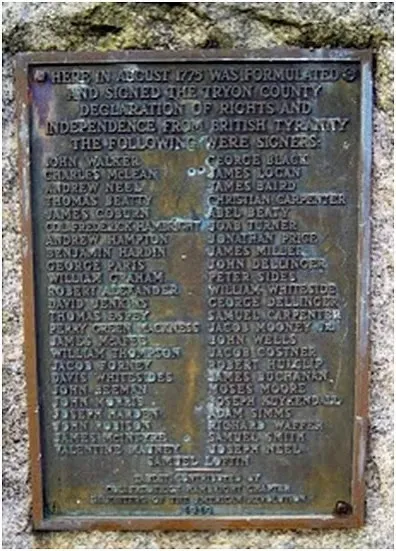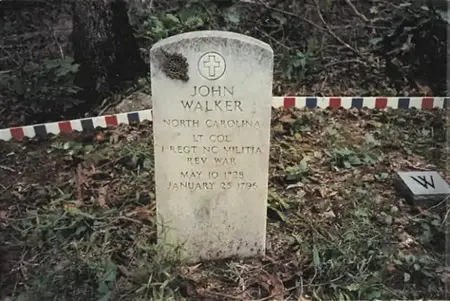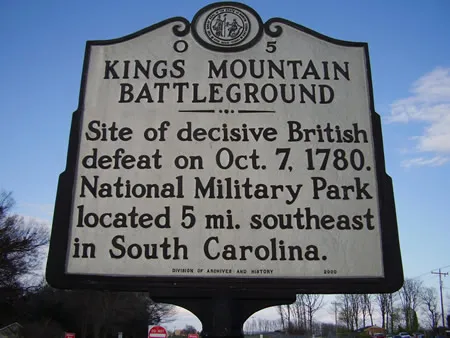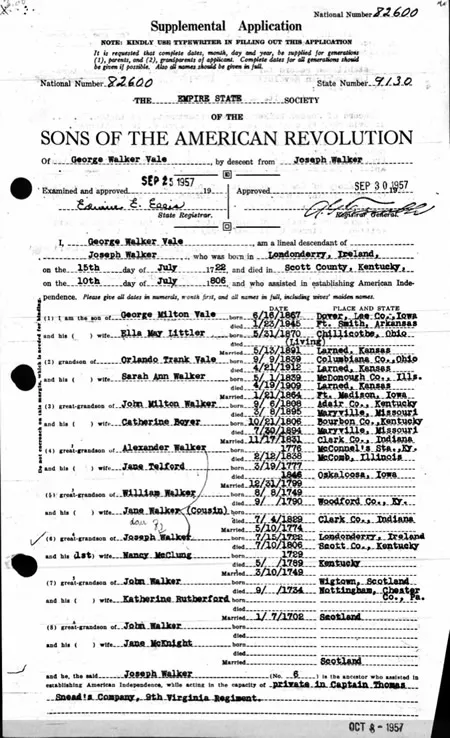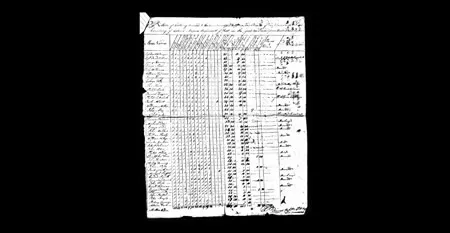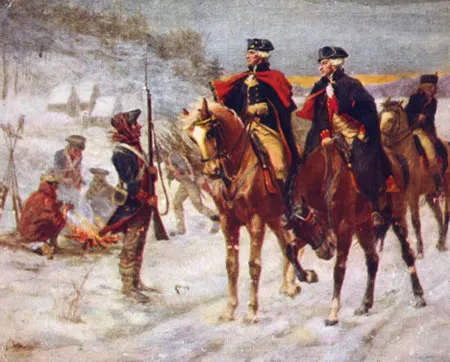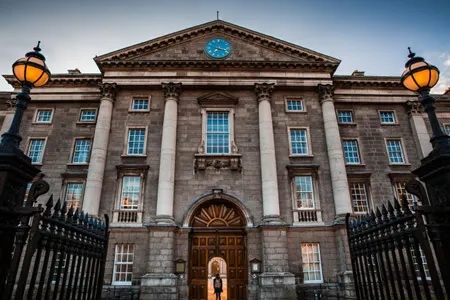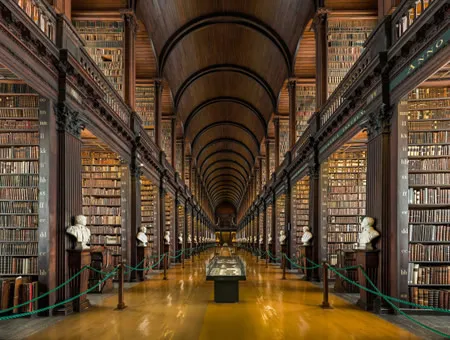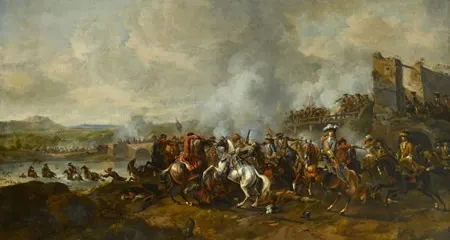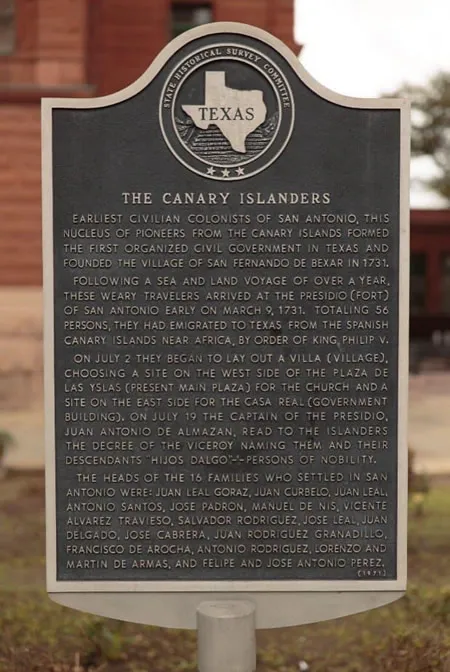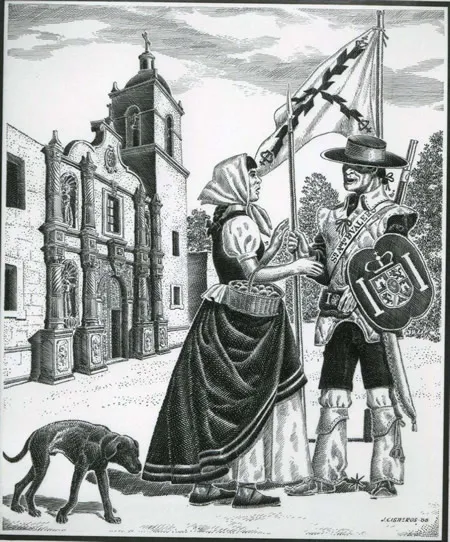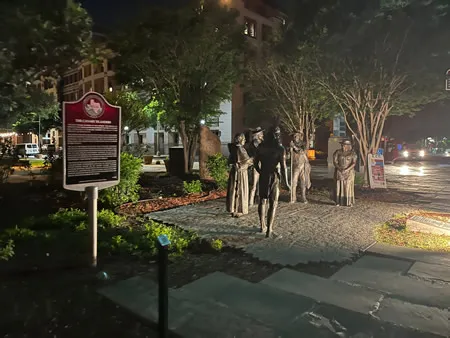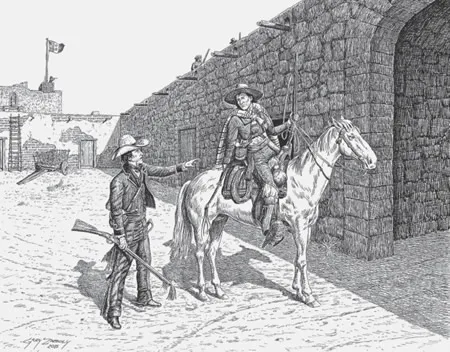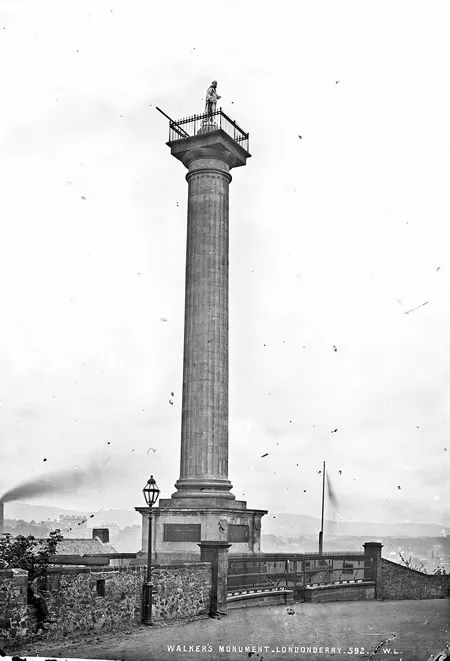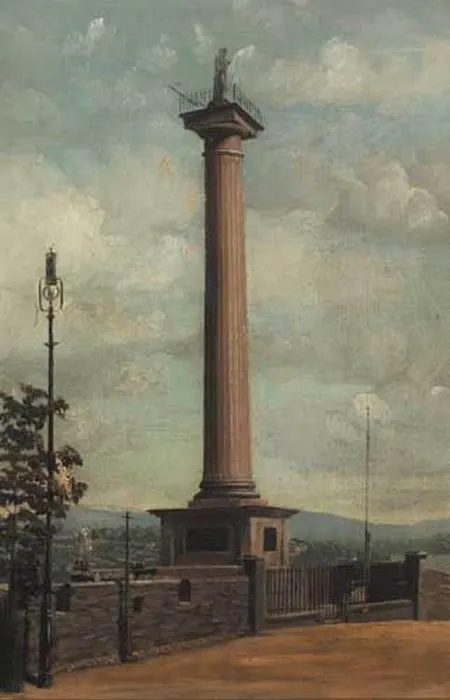Walker Family History

Texas Family with Generations of Founding Texas History, Since 1731
According to historical records, the first major city in Texas history is San Antonio. It was established by the Spanish in 1718 as a mission-presidio complex, and was originally named San Antonio de Béxar. Key points about San Antonio’s historical significance:
First formal municipality
San Antonio is considered the first formally chartered civil settlement in what is now Texas.
Mission San Antonio de Valero (the Alamo)
This mission was a key part of the early San Antonio settlement.
Spanish influence
The city’s architecture and culture still reflect its strong Spanish heritage.
1731: 90 Years Before Stephen F Austin and 100 Years Before family cousin Sam Houston, Josh’s 8th Great Grandfather Texas Settler Juan Curbelo from Spain – Maternal Line – is listed 2nd of the first 16 families to start the village of San Antonio Spanish Territory Texas 1731. Juan Curbelo also served as the sixth and eighth mayor of San Antonio in 1737 and 1739. His family arrived in San Antonio from the Canary Islands in 1731 with 15 other Canarian families to populate the region. – Texas Historical marker and Monument Downtown San Antonio.

1972
Joshua Walker – Owner and Founder of Walker Properties, LLC – Custom Home Builder, Real Estate Developer, Designer and Investor
Construction professional with 30+ years of residential construction, commercial construction, real estate and investment experience. Josh is the owner and founder of Walker Properties, LLC.
Josh has successfully completed a variety of construction projects both residential and commercial.
- Over 175+ Residential Construction Projects
- Nokia Office Buildings Irving Texas
- 15 Courtyard Apartments Gaston and Live Oak Dallas Texas
- Trinity Christian Academy and Texarkana ISD
- Churches
- Retail Shopping Centers
- Fire Stations
Josh is uniquely qualified with experience as a Builder, Real Estate Agent and Financial Planner.
Education and Certifications Earned
- Bachelor of Architecture – The University of Texas at Arlington
- Real Estate License
- Kaplan University Real Estate and Mortgage Certification
- Leonard Hawes Real Estate School
- CFP®, Certified Financial Planner™ practitioner
- AAMS®, Accredited Asset Management Specialist
- BFA, Business Financial Advisor
- College for Financial Planning
- Series 7 Federal Securities License
- Series 66 State Securities License
- Goup 1 Texas Insurance License
Awards
- Voted one of the best residential general contractors in Dallas by Dallas Architects
- City of Carrollton Business Hall of Fame and Best of 2018, 2019, 2020, 2021, 2022, 2023, 2024
- Best of Houzz 2019,2021, 2022
Overview
Josh was raised in a family that owned a Home Building Company and ReMax Real Estate offices here in N. Tx. He did not take over the businesses, but the experience started him down the path of building his own businesses.
Josh earned an Architecture degree and worked in large Architecture firms in his 20’s, including GFF Good Fulton and Ferrell Architecture Firm.
Josh also earned a Real Estate license in his 20’s which he would later use in conjunction with his construction knowledge and investment knowledge to buy, remodel and sell many investment properties.
Josh built a Financial Planning Practice and sold it in his 30’s. During this time Josh earned several licenses and the highly desired and difficult to earn CFP designation. During this time Josh gained valuable experience about managing money, investments, insurance vehicles, estate planning, tax strategies, budgeting and business planning.
After selling his financial planning practice Josh took his experience back to the construction industry and has successfully built the Residential Construction business over the past 15 years, learning the ins and outs of all the details of Residential Construction and the Real Estate market.

Kristie Walker – Co-Founder, Walker Properties, LLC
Kristie Walker is the co-founder of Walker Properties, LLC, a luxury homebuilding firm she launched in 2010 with her husband, Josh. A native Texan, Kristie built the company on a clear vision: to enrich the Dallas Fort Worth area by crafting exceptional, quality homes that stand the test of time.
Before founding Walker Properties, Kristie built a career in third party logistics, sharpening her problem-solving skills and attention to detail—traits that now define her leadership. Today, she brings that same purposeful discipline and expertise to the homebuilding process.
Under Kristie’s leadership, Walker Properties has earned recognition as a “Best of Houzz” winner multiple years and consistently ranks among Dallas’s Best of the Best home builders. Her clients frequently praise her clarity, responsiveness, and unwavering commitment to communication—hallmarks of a service-driven approach that sets the company apart.
Kristie is deeply committed to delivering a homebuilding experience defined by transparency, craftsmanship, and personal attention. Rooted in traditional Texas values, she believes in building lasting relationships based on trust, quality, and integrity—values reflected in every home Walker Properties delivers across North Texas.
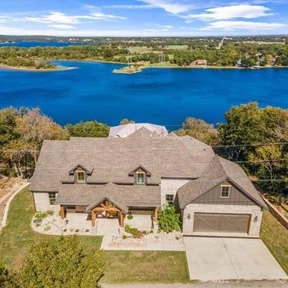
1951 - 2010
Father – Steven N Walker – Custom Home Builder
Born: March 2, Texas Independence Day 1951, Anchorage, Alaska (Father Stationed in Alaska during Cold War)
Death: February 11, 2010, Fort Worth, Texas
– Custom Home Builder – Fort Worth (North Texas)
– Known as an intelligent and honorable man. Owned and operated a custom home build business for 2 decades , teaching his son Josh Walker the home building business.
– Loved fishing at the lake, peaceful time on the water.
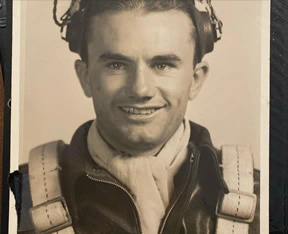
1918 - 1987
Grandfather – Lieutenant Colonel Leighton N Walker – US Air Force
Born: October 20, 1918, Orange, Texas
Death: February 16, 1987 Fort Worth, Texas
– Lieutenant Colonel United States Air Force
– B52 Stratofortress Pilot – One of the first 500 pilots trained on the B52 Bomber. Commissioned to fly bomber runs from Alaska to Russian air space loaded with nuclear payloads during the Cold War.
– WW2 and Korean War
– B24 Liberator Pilot
– Texas A&M Football Running Back – Texas A&M 1939 National Champions 11-0
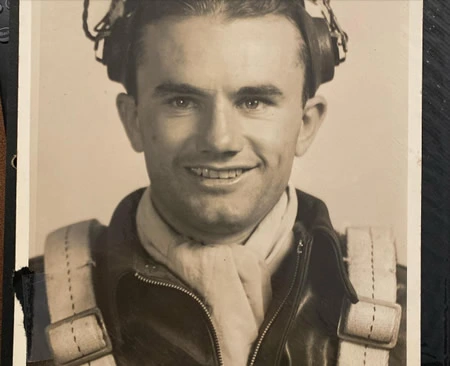
LT Col Leighton N Walker USAF Pilot
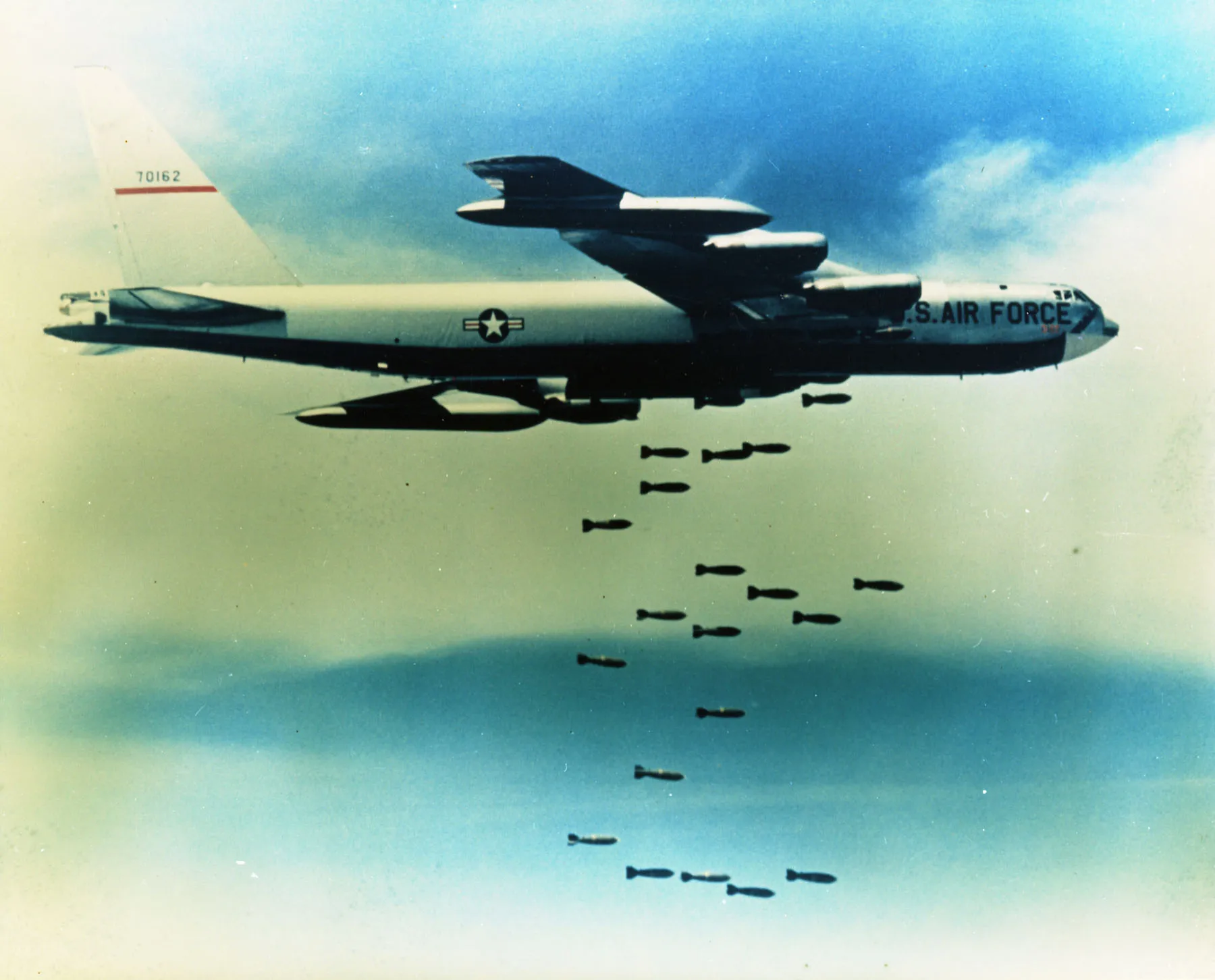
B-52 Stratofortress Bomber Pilot
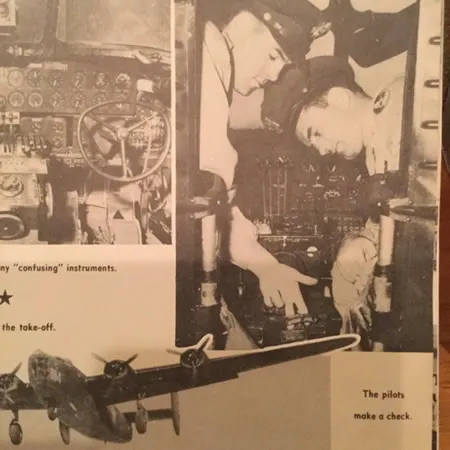
LT Col Leighton N Walker USAF Pilot
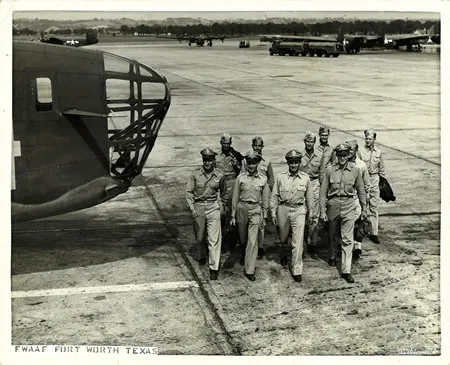
B24 Liberator Pilot
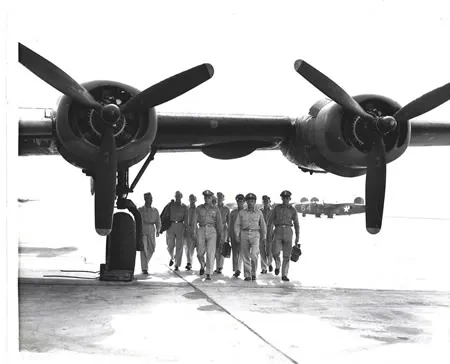
B24 Liberator Pilot
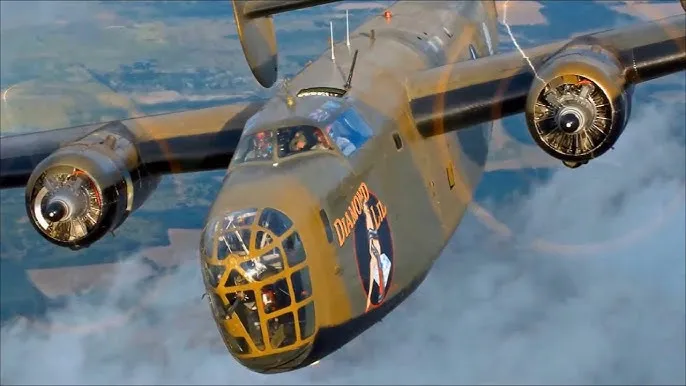
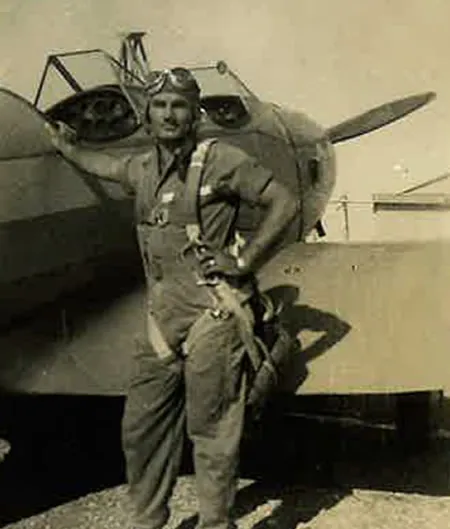
LT Col Leighton N Walker USAF Pilot
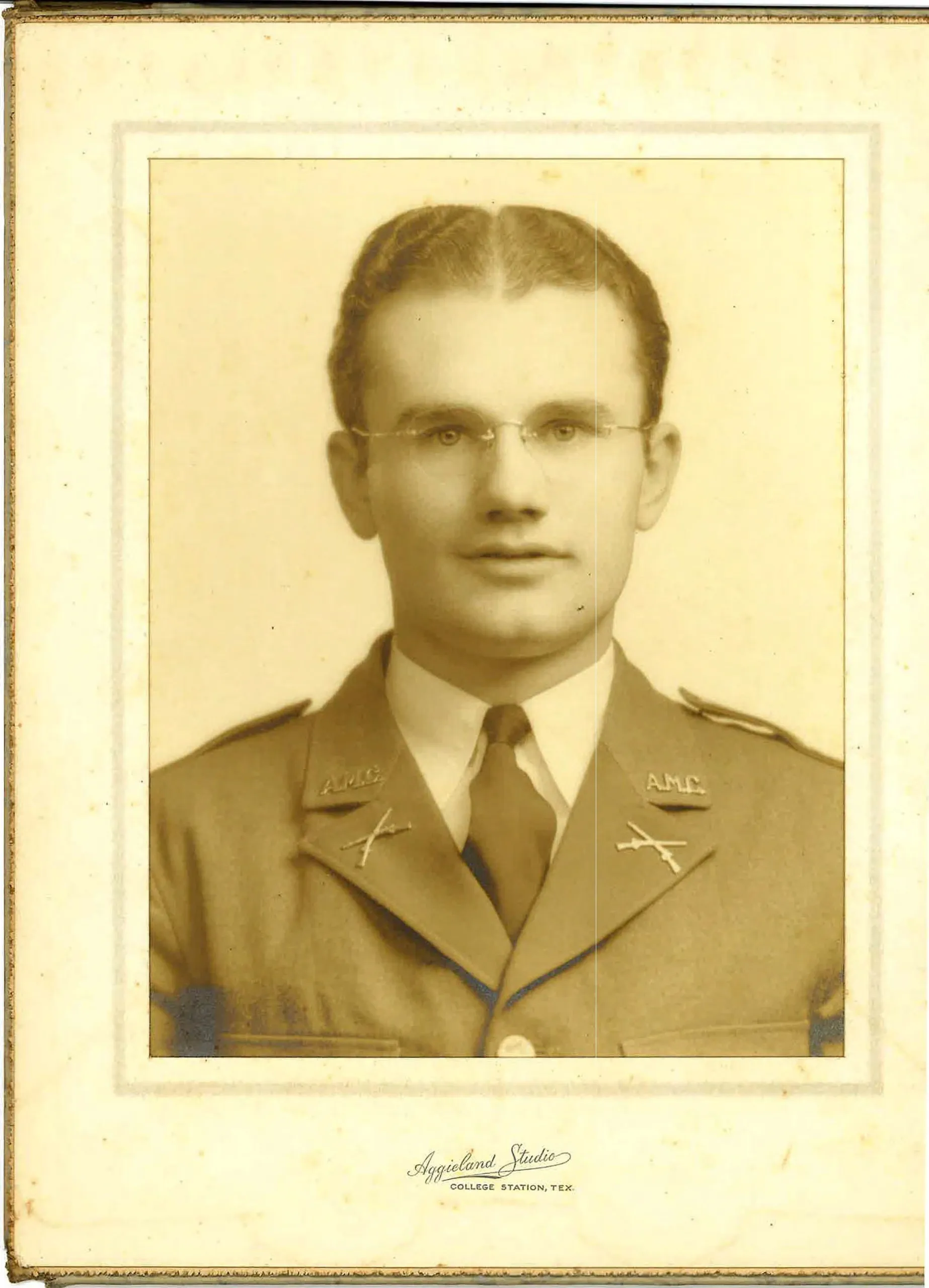
Leighton N Walker Texas A&M
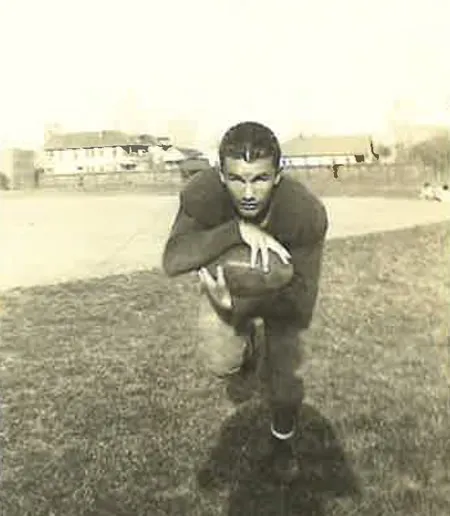
Leighton N Walker Texas A&M
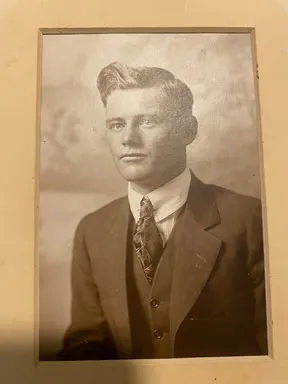
1881 - 1957
Great Grandfather – Samuel Routh Walker II – Builder
Born: January 9, 1881, Opelousas, Louisiana
Death: November 19, 1957, Baytown, Harris County, Texas
– Builder
– Loved fishing at the lake, peaceful time on the water.
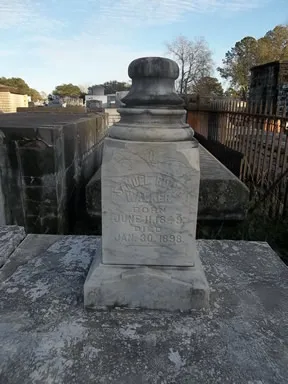
1849 - 1898
2nd Great Grandfather – Samuel Routh Walker I – Attorney
Born: June 11, 1849, St. Joseph, Louisiana
Death: January 30, 1898, Lake Charles, Louisiana
– Attorney
– Notary Public
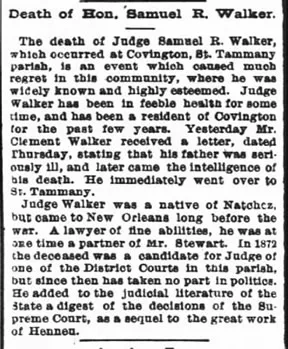
1822 - 1881
Samuel Rodgers Walker – Honorable Judge and Lawyer
Born: 1822 • Natchez District, Mississippi Territory
Death: May 5, 1881 • Covington, St. Tammany, Louisiana
– Honorable Judge and Lawyer
– Lawyer
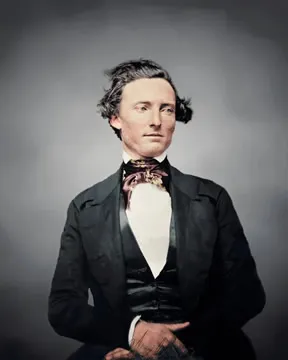
1817 - 1847
Great Cousin – Lieutenant Colonel Samuel Hamilton Walker in the Texas Rangers
Born: February 24, 1817 • Toaping Castle, Prince George’s, Maryland
Death: October 9, 1847 • Huamantla, Tlaxcala, Mexico
Burial: San Antonio, Texas
– Texas Rangers Hall of Fame Waco Texas
– Walker County, Texas. The Texas Legislature renamed the county in 1863 for Texas Ranger Samuel H. Walker.
– Samuel Hamilton Walker was an American army officer. He served as a Texas Ranger captain and officer of the Republic of Texas and the United States armies. Walker served in several armed conflicts, including the American Indian Wars and the Mexican–American War
– Co-Inventor of the Walker Colt Revolver. The Walker Colt was created in the mid-1840s in a collaboration between Texas Ranger Lt. Col. Samuel Hamilton Walker (1817–1847) and American firearms inventor Samuel Colt (1814–1862), building upon the earlier Colt Paterson design. Walker wanted a handgun that was extremely powerful at close range.
– Mexican American War – Three hundred men marched on the Rio Grande town of Mier, unaware that three thousand Mexican soldiers were in the area. They were ultimately forced to surrender, and the survivors were marched to Mexico City. General Santa Anna ordered their execution but eventually mandated that only every tenth prisoner from the Mier expedition would be killed.
– Black Bean Episode The Black Bean Episode, an aftermath of the Mier Expedition, resulted from an attempted escape of the captured Texans as they were being marched from Mier to Mexico City. After an escape at Salado, Tamaulipas, on February 11, 1843, some 176 of the men were recaptured within about a week. A decree that all who participated in the break were to be executed was modified to an order to kill every tenth man. Col. Domingo Huerta was to be in charge of the decimation. The victims were chosen by lottery, each man drawing a bean from an earthen jar containing 176 beans, seventeen black beans being the tokens signifying death.. Though Walker survived, he was imprisoned and brutally beaten. After six months, he escaped. In September 1843 he returned to Texas, and he joined Hays’s Ranger company in February 1844.
– Comanche Battle at Walker Creek Texas. In 1844 Walker joined John C. Hays‘s company of Texas Rangers and participated in the battle of Walker’s Creek near the junction of Walker’s Creek and West Sister Creek northwest of present-day Sisterdale in Kendall County. During the engagement the rangers, using new Colt revolvers, successfully defeated about eighty Comanches. Hays and his men were usually outnumbered in their skirmishes with Comanche and Mexican forces but managed to hold their own thanks to their highly effective use of a more modern weapon: the revolver. Soon after Samuel Walker joined Hays’ Ranger company in 1844, they and 14 other Rangers took on some 80 Comanches in the battle of Walker’s Creek. Armed with the first practical revolver, designed by Samuel Colt, the Rangers came out on top in the fierce clash. Walker was seriously wounded, but recovered to become a celebrated Ranger captain during the Mexican War.
– Creek and Seminole Wars Florida and worked as a scout in Florida until 1841.
– Walker enlisted in the Washington City Volunteers for the Creek Indian Campaign in Alabama in 1836.
– It’s said that Walker was not a man you would much notice in everyday life. He was of average size, and quiet. But in battle he was a lion. In his Notes of the Mexican War 1846-1848, J. Jacob Oswandel observed of Walker that ‘’war was his element, the bivouac his delight, and the battlefield his playground.” Walker lived more in his short life than your average ten men live in their long lives combined. He is the Walker, Texas Ranger, that should be most remembered.
Samuel H. Walker Texas Ranger Hall OF Fame
Samuel Walker: The Real ‘Walker, Texas Ranger’ | Texas Standard
Walker, Samuel Hamilton – Texas State Historical Association
Samuel Hamilton Walker – Wikipedia
Kirk Campbell at the Battle of Walker’s Creek | mgoblog
Samuel Walker, Samuel Colt, and the Six-Shooters That Won the Wst
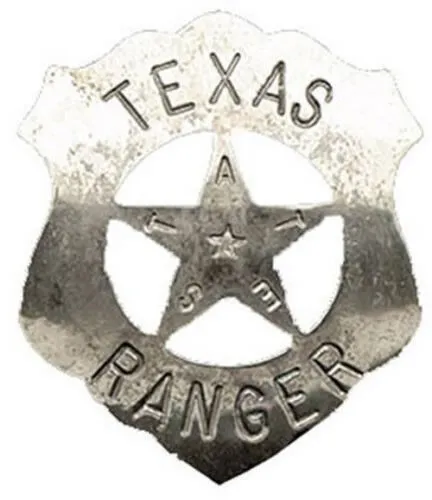
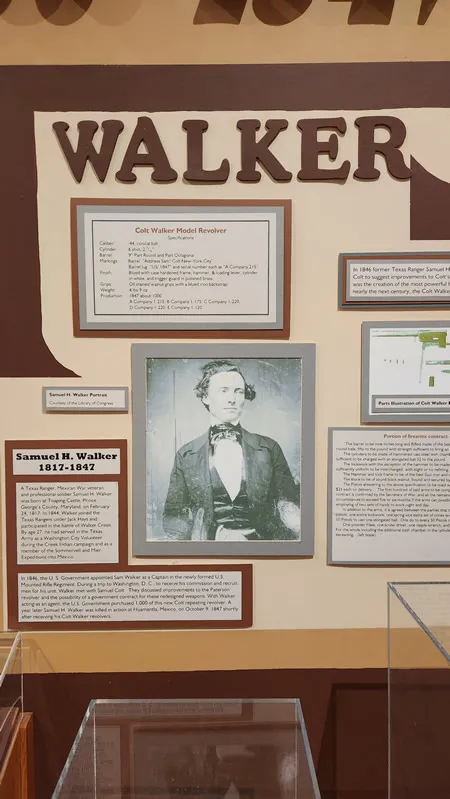
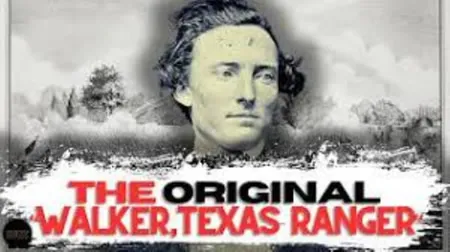
The Original Walker Texas Ranger
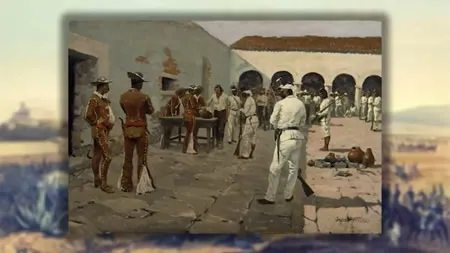
The Black Bean Incident, also known as the Bean Lottery, was a mass execution of Texan prisoners during the Mier Expedition
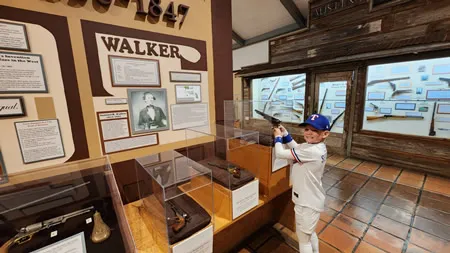
Luke with Great Cousing Sam
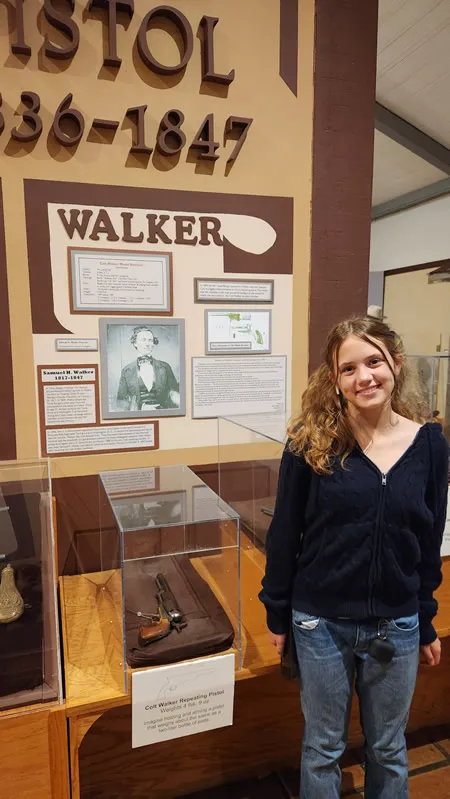
Julia w Great Cousin Sam Walker
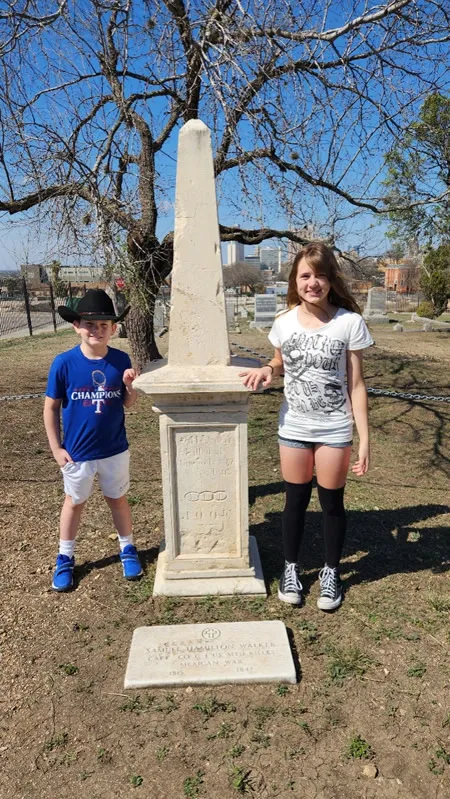
Luke and Julia at Sam H Walker Grave Site San Antonio
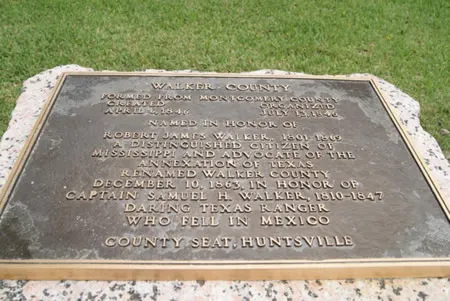
Walker County - TEXAS HISTORICAL MARKERS
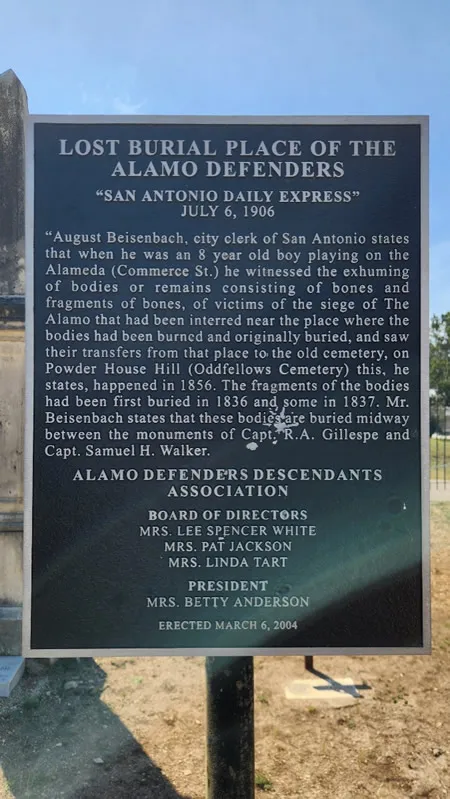
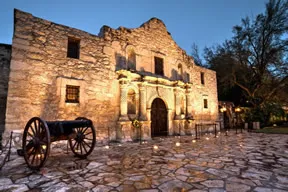
1799 - 1836
Great Cousin – Jacob Walker – Defender of the Alamo
Born: May 1799 • Columbia, Maury County, Tennessee
Death: 6 March 1836 • Battle of the Alamo, San Antonio, Bexar, Texas
Age: 36
Rank: Garrison Member
From: Tennessee
– Jacob Walker, said to have been last defender to die in the Alamo, according to survivor Susanna Dickinson.
– Jacob Walker, Alamo defender, was born in Rockridge County, Tennessee, in May 1799. In 1827 he married Sara Ann Vauchere, and they had four children. Walker was a resident of Nacogdoches. He took part in the siege of Bexar and afterwards remained in Bexar as a member of Capt. William R. Carey’s artillery company. Susanna W. Dickinson recalled that, during the siege of the Alamo, Walker often spoke to her about his children. She also recalled that during the battle, Walker rushed into her room pursued by Mexican soldiers who shot and bayonetted him to death as she looked on. Walker was the cousin of fellow Alamo defender Asa Walker and brother of the famous mountain man Joseph R. Walker.
He came from a very adventuresome family. Sam Houston was his cousin, and one of his brothers was the famous mountain man ( Joseph R. Walker ) who was one of the first guides to California. Joseph Walker has rivers, lakes and mountains named for him. Jacob had another brother named Jack Walker and his fathers name was John Walker.
Jacob Walker moved to Louisiana and met Sarah Ann Vauchere and they were married in November of 1827. They had two children while in Louisiana and Jacob had a farm there. He then moved to Nacogdoches, Texas were they had five more children.
In 1835, Sam Houston stopped in Nacogdoches and persuaded his cousin to join the army because they were giving land to the soldiers. Jacob’s first battle was the storming and capture of Bexar, December 5 until December 10, 1835. The siege of Bexar was a crucial event in the history of Texas. It brought Santa Anna at the head of his army to retake San Antonio and Texas, and men indecisive about their future as Mexican citizens or Texans were moved irrevocably to independence.
After the Siege of Bexar, Jacob remained in Bexar as a member of Carey’s artillery company. This was his duties during the battle of the Alamo. He was a gunner until the end.
According to Susanna Dickinson, Jacob Walker was the last man to die at the Alamo. Jacob Walker, the gunner from Nacogdoches after there were no more balls left to fire, plugged his cannon with scraps of cast iron and broken pieces of chain and fired at the Mexican soldiers. A Mexican officer trained a force of muskets on them and they became major targets. Jacob Walker, who had remained by his cannon until his wounds kept him from firing his cannon, leaped from the ramp, and dashed to the side of Mrs. Dickinson in one of the chapel side rooms. Within moments, the Mexican soldiers broke through the old doors. The bloody fighting was fierce, but brief. It is beleived that Jacob was attempting to ignite the main powder magazine which would have blown the Alamo to pieces, but because of his injuries crawled to Mrs. Dickenson and begged her to take a message to his wife Anna, he then turned to face the Mexican hordes. Susanna Dickenson said the Mexican soldiers shot and bayoneted him to death as she looked on. The soldiers pitched him around on bayonets, as they would a bail of hay. Susanna was one of a few that was spared during the massacre.
Jacob Walker died on March 6th, 1836 and is considered to be the last man to fall at the Alamo.
Captain William R. Carey commanded the artillery company at the Alamo — a critical defensive unit responsible for manning the cannons and fortifying key positions against Santa Anna’s army.
Location of Carey’s Company in the Alamo:
Historical accounts and credible reconstructions of the battle suggest that Captain Carey’s artillery company was primarily stationed along the Alamo’s north wall and near the main plaza (or inner compound), which included:
The North Wall:
- This was a key defensive point vulnerable to attack due to its relative lack of fortification compared to other walls. Carey’s men were assigned here with cannons to repel the anticipated Mexican advance.
The Inner Compound/Plaza:
- Some of Carey’s artillery pieces were located within the main plaza of the Alamo compound, where they could be moved and used to support multiple angles of defense.
Chapel Area:
- Although not their main station, remnants of the artillery company — including men like Jacob Walker — ended up in or near the chapel toward the end of the battle, likely after falling back from more exposed positions.
Supporting Sources:
- The Alamo (thealamo.org) states that Carey was in charge of placing and overseeing artillery crews at multiple cannon positions, including north-facing walls.
- In 13 Days to Glory by Lon Tinkle, Carey’s artillery company is implied to have defended heavily contested areas and suffered significant casualties during the final assault.
In Summary:
Captain William R. Carey’s company was stationed mainly:
- Along the north wall of the Alamo (key artillery defense line)
- In the main plaza of the Alamo compound
- Ultimately, survivors or remnants may have ended up in the chapel, where the final stand took place
List of Alamo defenders – Wikipedia
The Siege and Battle of the Alamo: Day 13
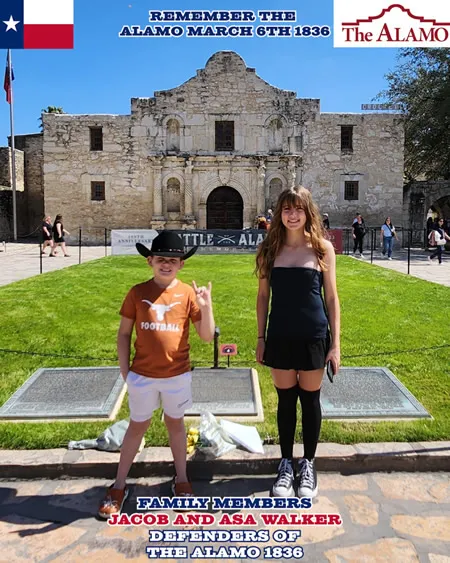
Battle of the Alamo 189th Anniversary 2025
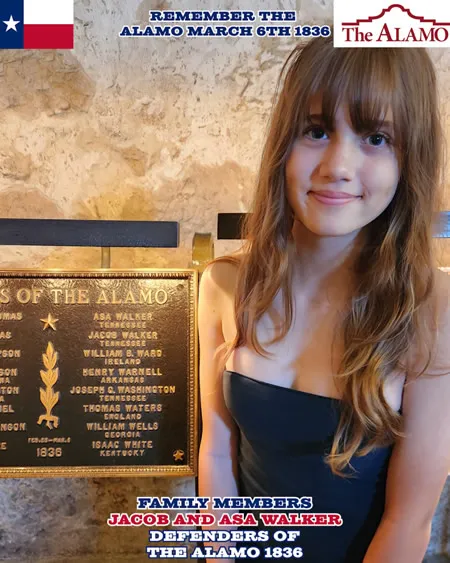
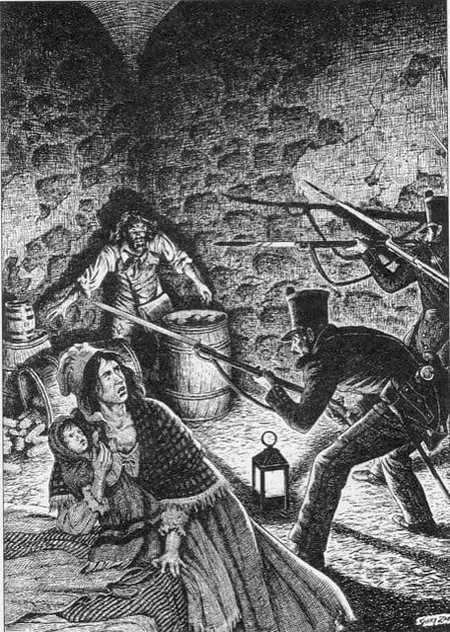
The final desperate moments of Tennessee-born Jacob A. Walker. Walker was a faithful volunteer fighting with Capt. William Ridgeway Carey’s artillery company (“The Invincibles”). Walker was trapped in
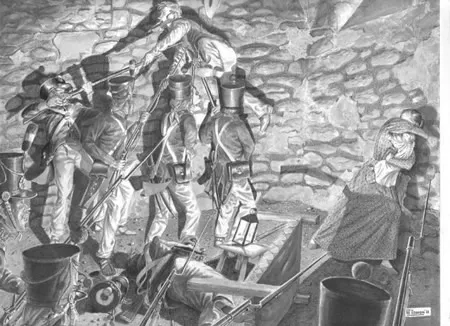
Jacob Walker Said to have been last defender to die in the Alamo according to survivor Susanna Dickinson. He was shot multiple times in the back and bayonetted as he rushed into the prayer room
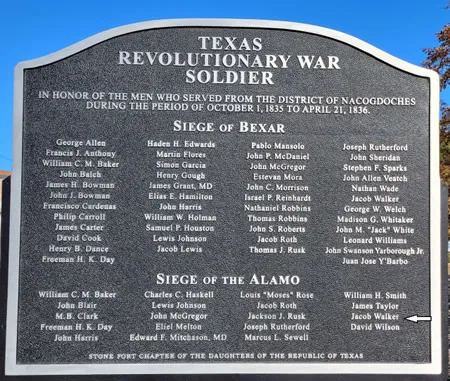
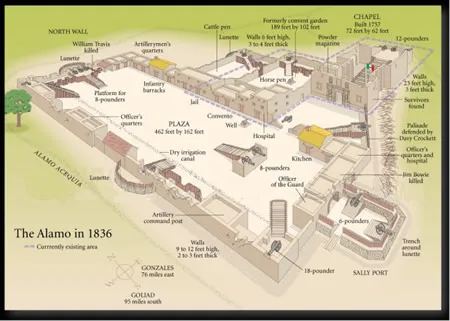
The Alamo in 1836
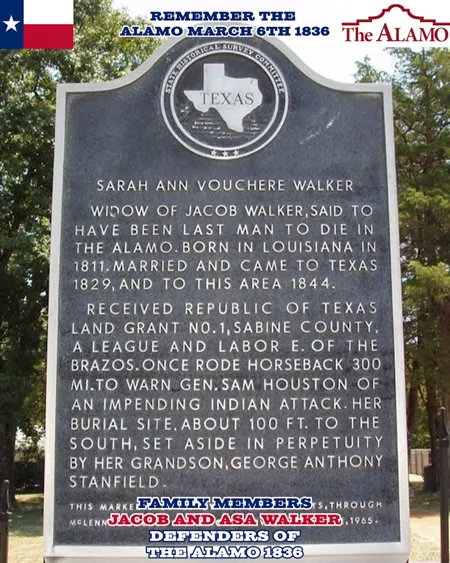
Sarah Ann Vochere and Jacob Walker - TEXAS HISTORICAL MARKER
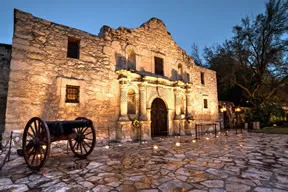
1813 - 1836
Great Cousin – Asa Walker – Defender of the Alamo
Born: 1813 • Tennessee
Death: 6 March 1836 • Battle of the Alamo, San Antonio, Bexar, Texas
Age: 23
Rank: Garrison Member
From: Tennessee
– Asa Walker, Alamo defender, was born in Tennessee in 1813. He moved to Texas in November of 1835 at the expense of his friend, William Washington Gant, settling at Nacogdoches. On November 28, 1835, he wrote a letter at Washington-on-the-Brazos to Gant, explaining why he had stolen his gun and overcoat, stating, “. . . the hurry of the moment and my want of means to do better are all the excuses I have.” Walker took part in the siege of Bexar. He was either wounded in the battle or fell sick afterward. Col. James C. Neill’s return of his men lists Walker as “in hospital.” Walker served in the Alamo garrison as a member of Capt. Robert Whiteqv’s infantry company, the Bexar Guards. Walker died in the battle of the Alamo on March 6, 1836. He was a cousin of fellow Alamo defender Jacob Walker.
F. C. Proctor, a lawyer led a lawsuit to try to recover land bounty remunerations for the heirs of PVT Asa Walker and stated that Asa was one of the last men killed in the Battle of the Alamo, firing his borrowed gun until there were no bullets, then swinging his gun similar as a club, and fighting with his hands, until there were 7 Mexican army men dead near his feet.
Private Asa Walker served in the Alamo garrison as a member of Captain Robert White’s infantry company, known as the Béxar Guards. This unit, composed largely of local volunteers from the San Antonio area (Béxar), was an infantry unit, meaning they were not assigned to fixed artillery like Carey’s company but were instead mobile defenders stationed where they were most needed during the battle.
Likely Station of the Béxar Guards (Capt. Robert White’s Company):
While precise placement of each infantryman is not fully documented, based on historical reconstructions and their role:
- Béxar Guards were likely stationed inside the main compound, especially:
- Along the west and south walls, which needed heavy infantry presence to defend breaches.
- Inside the plaza and Long Barrack, which was a key area of resistance.
- Some, including Asa Walker, may have ended up in the chapel or side rooms during the final retreat and last stand, as several infantrymen fell back there once the walls were breached.
In Summary:
- Asa Walker served in the Béxar Guards under Capt. Robert White.
- His unit was most likely stationed in interior defensive positions, including:
- The Plaza
- Long Barrack
- Potentially the Chapel during the final hours
List of Alamo defenders – Wikipedia
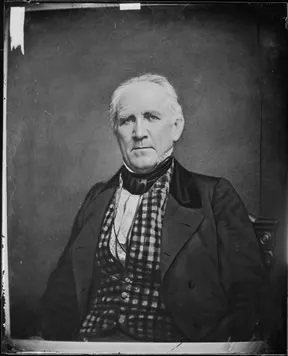
1793 - 1863
Great Cousin – General Samuel Williams Houston – A Prominent American Statesman, Soldier, and Key Leader in the History of Texas.
Birth 2 MAR 1793 • Lexington, Rockbridge, Virginia, USA
Death JULY 26, 1863 • Huntsville, Walker, Texas, USA
Cousin Sam Houston was an American general and statesman who played a prominent role in the Texas Revolution. He served as the first and third president of the Republic of Texas and was one of the first two individuals to represent Texas in the United States Senate. He also served as the sixth governor of Tennessee and the seventh governor of Texas, the only individual to be elected governor of two different states in the United States.
Sam Houston became a national celebrity, with the City of Houston created in 1837 being named after him and Walker Street Downtown Houston named after the Walker Family.
Col John Rutherford “Gunstocker” Walker (scalped) Sr. II – 7th great-grandfather
Birth MARCH 17, 1705 • Wigton, Wigtonshire, Scotland, United Kingdom Ulster, England then moved to Newry Down,Ireland
Death SEPTEMBER 23, 1778 • Walker Creek, Rockbridge, Virginia, USA
Married
Nancy Ann Houston Walker – 7th great-grandmother
Birth 1705 • Londonderry, Chester County, Pennsylvania, USA
Death 1774 • Walker Creek, Virginia, USA
Christopher John Houston – 9th great-grandfather
Birth 1676 • Houstoun, Renfrewshire, Strathclyde, Scotland, United Kingdom
Death 6 DECEMBER 1726 • Mill Creek Hundred, New Castle County, Delaware, USA
Married
Martha M Walker – 9th great-grandmother
Birth 1675 • Renfrew, Renfrewshire, Strathclyde, Scotland, United Kingdom
Death 19 SEPTEMBER 1739 • Walker Creek, Rockbridge County, Virginia, USA
John Samuel Houston – Is our 10th Great Grandfather and Sam Houston’s 2nd Great Grandfather
Birth 1649 • Philadelphia, Philadelphia, Pennsylvania, United States
Death 1734 • Antrim, Ulster, Ireland
10th great-grandfather
Key Accomplishments:
- Served as Governor of two U.S. states: Tennessee (1827–1829) and Texas (1859–1861) – the only person in U.S. history to do so.
- Played a crucial role in Texas independence from Mexico.
- Commanded the Texan Army and led the decisive victory at the Battle of San Jacinto in 1836, securing independence from Mexico.
- Became the 1st and 3rd President of the Republic of Texas.
- Served as a U.S. Senator from Texas after it joined the Union in 1845.
- A staunch Unionist, he opposed Texas’ secession from the United States in 1861 and was removed from office as governor for refusing to swear loyalty to the Confederacy.
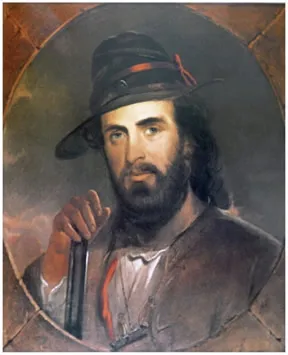
1798 - 1876
Great Cousin – Captain Joseph Rutherford Walker Jr – American Legendary Explorer
Birth 13 December 1798 • Roane County, Tennessee
Death 27 October 1876 • Martinez, Contra Costa, California
– Joseph Walker’s brother is Jacob Walker who was credited as the last defender to die at the battle of the Alamo.
– Sam Houston, Joseph Walker’s Cousin, convinced him to join the Army in the War of 1812. They both fought at the battle of Horse Shoe Bend under Old Hickory Andrew Jackson.
– In September 1821 Joseph Walker leads one of the first ever expeditions down what would become the famous and legendary Santa Fe Trail.
– In July 1832 Joe Walker is also credited by historians for leading the first wagon train to ever cross the Rocky Mountains. Walker opened up a flood of humanity to westward expansion for families from the US to California, helping create an American Empire stretching to the Pacific shore.
– Walker also led many people by expedition to the California gold fields during the California Gold Rush.
– Another major achievement of Joseph Walker, is he is credited as being the first white man to see and discover Yosemite Valley.
– Walker’s additional Legacy includes several different places being named for him.
Walker Pass California
Walker Basin California
Walker River which starts in California and travels into Nevada
Walker Lake (Nevada)
Joe Walker Town, California
Walker, Arizona
It is said that Joseph Walker did not follow trails, he blazed them.
Our great cousin Joseph Walker is an American legendary explorer.
Joe Walker: Humble Hero | Into the Wild Frontier | Season 2 | Episode 3
Joseph R. Walker | A Man to Match the Mountains, Part I – Tahoe Guide
Joseph R. Walker | American Western Expansion
Joseph Walker – Kids | Britannica Kids | Homework Help
Walker Lake (Nevada) – Wikipedia
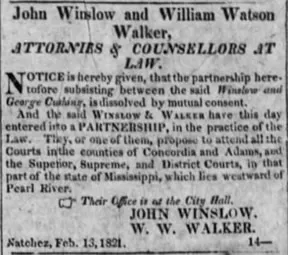
1792 - 1831
4th Great Grandfather – William Watson Walker – Attorney at Law
Born: September 15, 1792 Rutherford, North Carolina
Death: June 25, 1831 Natchez, Adams, Mississippi
– Attorney at Law
– William Watson Walker was the son of Congressman Felix and Isabella Henry Walker. Felix Walker and his father accompanied Daniel Boone to unsettled parts of Kentucky. Cherokees attacked the group, killing several members of the party and severely wounding Felix Walker. In his account, Walker recounted Daniel Boone’s solicitous attention to his condition, nursing him until he was well enough for Boone to take him to the Watauga Settlement. [Source: George W. Ranck, Boonesborough Its Founding, Pioneer Struggles, Indian Experiences, Transylvania Days and Revolutionary Annals (Louisville, Kentucky: J.P.Morton and Co., 1901), Appendix G. Written about 1824 and originally published in DeBow’s Review, February 1854.]
Walker’s paternal grandparents were Colonel John and Elizabeth Watson Walker. (Find A Grave Memorials # 97066085 and # 97066112, respectively.) His maternal grandparents were William and Isabella McKeown Henry. (Find A Grave Memorials #11858469 and #152774172.)
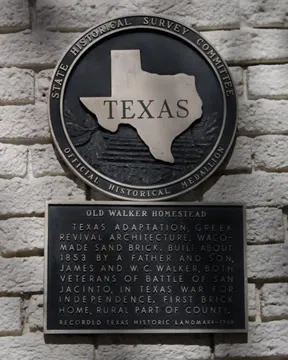
1793 - 1873
Great Cousin – James Francis Walker Jr – Fought in the Battle of San Jacinto 1836
Born: October 10, 1793 • Orange, Virginia
Death: March 24, 1873 • Waco, McLennan Co., Texas
– James Walker, Jr. (1793-1873), was born in Madison County, Kentucky, on October 20, 1793. He married Abler Collett on April 25, 1816, in Wayne County, Kentucky, and they had five children. She died in 1831. He moved his family to New Year Creek in Washington County, Texas, in 1835. Walker later received 640 acres for service to the Republic of Texas from March 1 to May 30, 1836, and 1,280 acres for being in the battle of San Jacinto as a private in Col. Sidney Sherman‘s command. Walker died on March 24, 1873, and is buried at the Cobbs-Walker family cemetery in McLennan County. – Historical Marker: Built First Brick home rural part of McLennan County.
Daughters of the Republic of Texas Page 282
James Walker Jr., a farmer, came to Texas with his five children on April 1, 1835, after the death of his wife. James Jr. was born in Wayne County, KY, on Oct 20, 1793, son of James Walker Sr. and Catherine Miller. He married Abrilla Collett on March 25, 1816 in Wayne County, KY, daughter of Samuel Collett and Elizabeth Whitaker.
James Jr. and Abrilla’s children were: Miranda Eleanor married John M. Stephen; Elizabeth Catherine married William H. Miller; Sarah married James R. Stephen, after his death Lorenzo D. Sterling; Abrilla married Joseph V. Guyton; and William Collett married Rebecca Briscoe Cobbs.
Their journey to Texas was on the Mississippi to New Orleans, where they obtained passage on a sailing vessel bound for Galveston. This vessel wrecked in a storm; they secured passage on another vessel, and finally arrived at the home of his parents on New Year’s Creek.
James and William Collett served in the Texas Army. James fought in the Battle of San Jacinto. Receiving land grants for their services, they built the first brick home in McLennan County in 1851. The home still stands in Waco, and bears a Texas Historical Marker. James died in McLennan County on Feb. 24, 1873. He never remarried and is buried in the Cobb.
– His Father, James Walker, Sr. (1756 – 1837) Below.
From the Texas State Historical Society
Also if you go to this link there are lengthy biosketches of the Walkers both Sr and JR
Daughters of Republic of Texas – – Volume 1 – Page 282
https://books.google.com/books?isbn=1563112140
Old Walker Homestead – TEXAS HISTORICAL MARKERS
Walker, James – Texas State Historical Association
Battle of San Jacinto – Wikipedia
Washington-on-the-Brazos | Texas Historical Commission
Photo: Cobbs-Walker Cemetery Marker
James Frances Walker Jr. (1793-1873) – Find a Grave Memorial
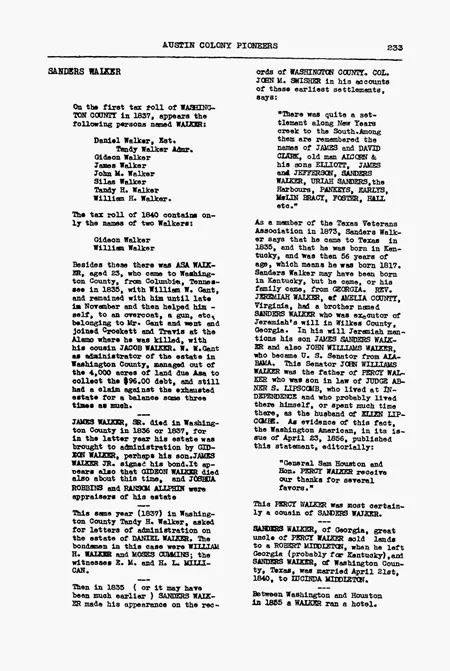
1st Persons to be on Tax Rolls Washington County
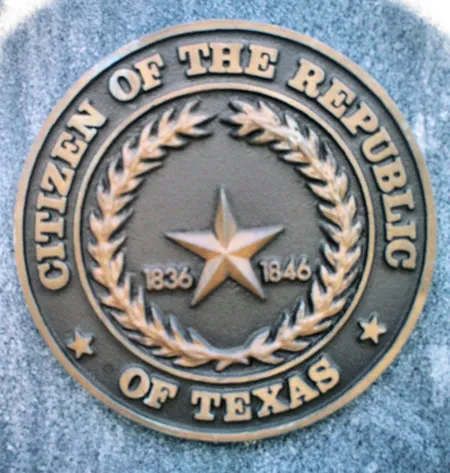
James Walker Jr- Citizen of the Republic of Texas
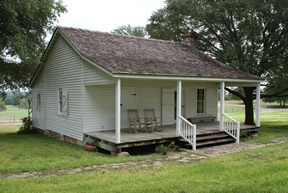
1756 - 1837
Great Cousin – James Francis Walker Sr – Old 300 – One of the First American Colonists to Own Land in Texas
Born: 13 December 13, 1756 • Orange County, Virginia
Death: 29 May 29, 1837 • Brenham, Washington County, Texas
Buried: College Station, TX
– One of the First American Settlers of Texas:
Dateline: January 1823 “The Old 300”
Texas is officially opened to colonization by citizens of the United States.
Stephen F. Austin executed a land grant from Mexico for 300 settlers to colonize Texas. These 300 were known as “the old 300”.
James Walker Log House is a historic log house in Brenham, Texas.
It was built in 1824 and added to the National Register of Historic Places in 1989
– Walker, James (1756–1837). James Walker, one of Stephen F. Austin’s Old Three Hundred colonists, was born in 1756. During the American Revolution he served in Orange County, Virginia, and Virginia Continental line units. He married Catherine Miller on September 9, 1783, and they had fourteen children, including Susanna, who later married Phillip Singleton. They lived in Virginia and Kentucky before moving to Texas in 1824. Walker received a Spanish land grant of one league in what is now Washington County on July 21, 1824. The 1826 census lists him as a farmer and stock raiser over fifty years of age, with a wife over fifty, three children, and four slaves. Walker suffered loses in property and health during the Runaway Scrape and died in 1837 in Washington County.
– The “Old Three Hundred” were 297 grantees who purchased 307 parcels of land from Stephen Fuller Austin in Mexican Texas. Each grantee was head of a household, or, in some cases, a partnership of unmarried men. Austin was an American approved in 1822 by Mexico as an empresario for this effort, after the nation had gained independence from Spain. By 1825 the colony had a population of 1,790.
The colony encompassed an area that ran from the Gulf of Mexico on the south, to near present-day Jones Creek in Brazoria County, Brenham in Washington County, Navasota in Grimes County, and La Grange in Fayette County. It was the first authorized colony of Anglo-American settlers.
Stephen F. Austin agreed to carry out his father’s plan for a colony. At the end of the summer of 1821, he and a small group of Anglo-American settlers crossed into Texas. Before he reached San Antonio to meet with the governor, the group learned that Mexico had gained its independence from Spain. Texas was now a Mexican province rather than a Spanish one. Governor Martinez assured Austin that the new Mexican government would honor the colonization contract.[3]
Austin returned to Louisiana to recruit settlers. He offered land at 12 cents per acre, which was 10% of what comparable acreage sold for in the United States. The Settlers were required to satisfy four regulations:
- They had to be Catholic,
- They had to be of good moral character,
- They had to improve the land (usually by adding structures), and
- They had to cultivate the land within two years, or forfeit it.
– James Walker, one of Stephen F. Austin’s Old Three Hundred colonists, was born in 1756. During the American Revolution he served in Orange County, Virginia, and Virginia Continental line units. He married Catherine Miller on September 9, 1783, and they had fourteen children, including Susanna, who later married Philip Singleton. They lived in Virginia and Kentucky before moving to Texas in 1824. Walker received a Spanish land grant of one league on July 21, 1824 located on New Years and Woodward creeks in present Washington County, TX. The 1826 census lists him as a farmer and stock raiser over fifty years of age, with a wife over fifty and three children. Walker suffered loses in property and health during the Runaway Scrape and died in 1837 in Washington County. He is buried in Peach Creek Cemetery in Brazos County, Texas. There is no tombstone.
– His son, James Walker, Jr. (1793-1873) Above.
From the Texas State Historical Society
Also if you go to this link there are lengthy biosketches of the Walkers both Sr and JR
Daughters of Republic of Texas – – Volume 1 – Page 282
https://books.google.com/books?isbn=1563112140
Walker, James – Texas State Historical Association
James Walker Log House – Wikipedia
Honoring Texas History: “The Old 300” January 1823
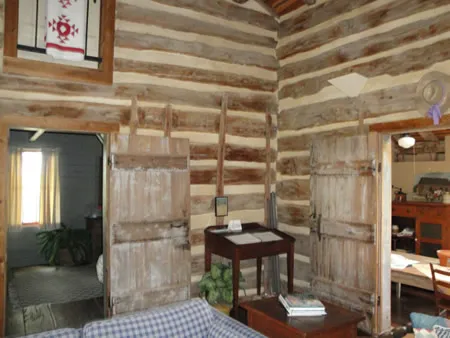
Original Texas Log Cabin Homestead - James Francis Walker Sr - Old 300 Washington County - 1756 - 1837
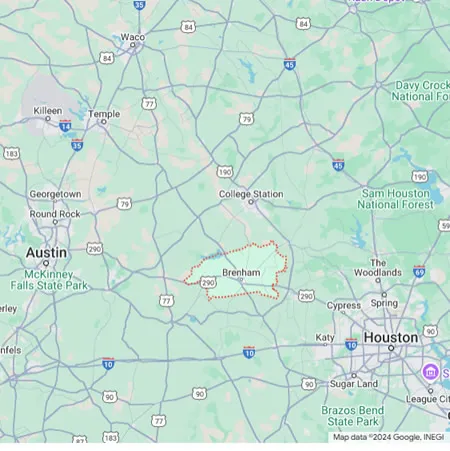
1756 - 1837 James Francis Walker Sr Old 300 Washington County - Land Grant Purchase
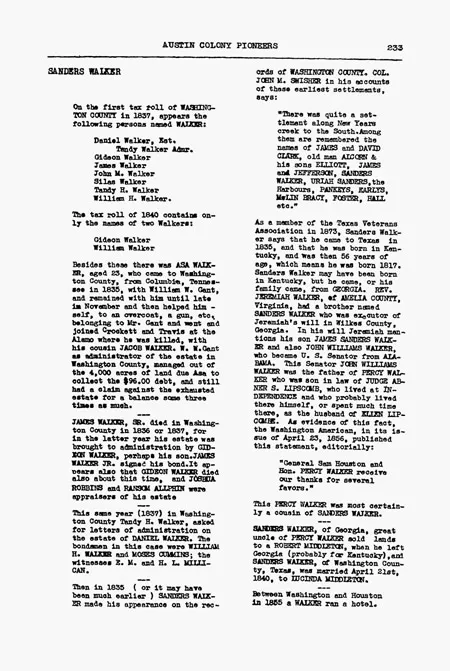
AustinPioneers - 1st Persons to be on Tax Rolls Washington County
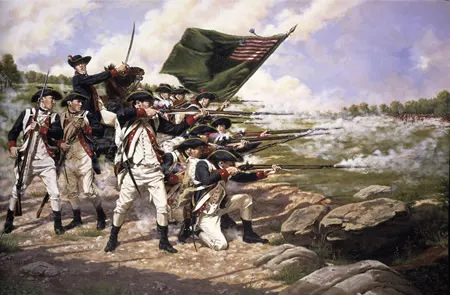
James Walker Sr fought in the Revolutionary war in the Virginia Continental line units
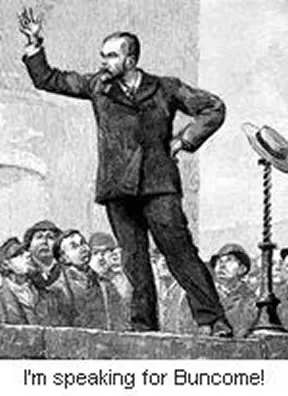
1753 - 1828
5th Great Grandfather – Lieutenant Colonel Felix Hampton Walker M.D. US Congressman
Born: July 19, 1753 Hampshire Co., Virginia, now part of West Virginia
Death: January 25, 1828 Clinton, Hinds County, Mississippi
– Lt. Colonel Walker fought in the American Revolutionary War
– US Congressman Democratic-Republican U.S. Congressman from North Carolina between 1817 and 1823.
– Medical Doctor
– Joined Daniel Boone‘s company, which established the settlement of Boonesborough, Kentucky, in 1775. He was named clerk of the court of Washington district of North Carolina in 1775 and held that post until 1778 (Washington district lay mostly within the boundaries of contemporary Tennessee and was organized as a county in 1777.
– He worked as a trader and land speculator in Haywood County before being elected to Congress.
– In 1816, Walker was elected to the 15th United States Congress as a Democratic-Republican. He was re-elected twice and failed in a bid for the fourth term in 1822.
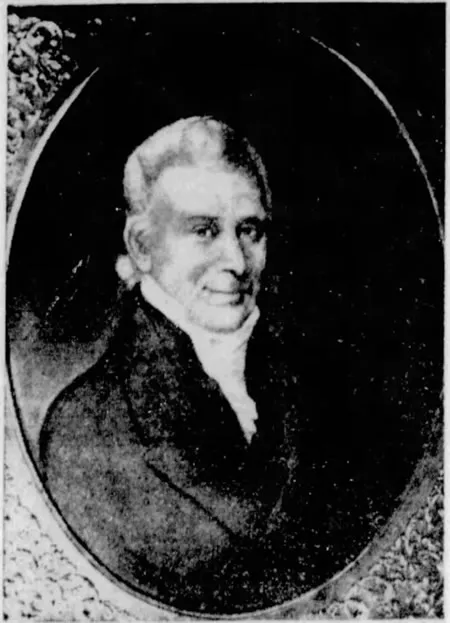
Felix Walker Portrait
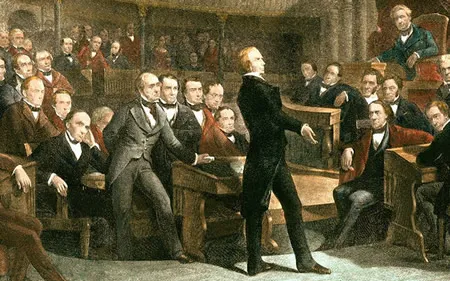
Painting of Felix Walker Speech to Congress
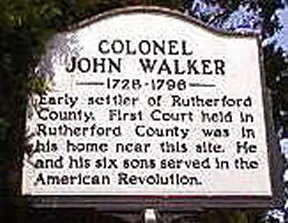
1728 - 1796
6th Great Grandfather – Colonel John Rutherford Walker Jr. IV
Born: January 16, 1728, Bohemia Creek, New Castle, Delaware
Death: January 25, 1796, Hampshire, Rutherford, North Carolina
– John Walker, Indian fighter and Revolutionary officer, was born in Appoquinimink Hundred, New Castle County, Delaware, the son of John Walker of Derry, Ireland, who immigrated to Delaware in 1720. The elder Walker was the grandson of the Reverend Governor George Walker of Donaghmore County, Londonderry, Ireland, who successfully commanded the Siege of Derry in 1689 against the forces of King James II.
– As a young man Walker settled on the south fork of the Potomac River in Hampshire County, Va., and in 1751 married Elizabeth Watson. He served as a volunteer under Colonel George Washington in the Virginia colonial troops suffering in the disastrous defeat of the army of General Edward Braddock in 1755 near Fort Duquesne and fought the rear action during the retreat of the colonial troops. Shortly afterwards he moved to the area that became Lincoln County, N.C., on Lee Creek, about ten miles east of the present town of Lincolnton.
– 1761 Campaign against the Cherokee Indians. He enlisted in Col. Grant’s S.C. Regiment and served in the campaign against the Cherokee Indians in 1761.
– He then purchased a beautiful span on Crowder’s Creek about 4 miles from Kings Mountain. In 1768 he moved to a tract of 400 acres at the mouth of the Cane Creek about 5 miles NE of Rutherfordton.
– In 1775 he and his son Felix accompanied Colonel Richard Henderson and Daniel Boone on an expedition that explored Kentucky and founded the settlement of Boonesboro.
– In 1774 he was appointed by the NC Legislature as one of the Commissioners to select a site to build a courthouse, prison and stocks for the county of Tryon. Prior to the outbreak of the Revolutionary War, he was a leader in Civil Activities under the Royal Government but resigned his office in 1775.
– In 1775 he was appointed to the Provincial Congress. It is said that he wrote, masterminded and was a signer of the District and County Commission of Safety, the Tryon County Declaration of Rights and Independence from British Tyranny. At the third Provincial Congress, two regiments of Continental troops were ordered raised in NC and he was immediately selected as one of the captains of a company in the First Regiment and was commissioned Sept. 1, 1775. He held several commissions such as Col. and Commandant of the Tryon Militia.
– During the Summer of 1775, John Walker was the existing Colonel over the Tryon County Regiment of Militia.
– On 9/1/1775, John Walker was commissioned as a Captain under Col. James Moore in the 1st NC Regiment, which was considered to be “Provincial Troops” at that time.
– On 11/28/1775, this regiment was placed on the NC Continental Line. Capt. John Walker led his company at the battles of Moore’s Creek Bridge (2/27/1776) and the Breach Inlet Naval Battle, SC (6/28/1776).
– On 2/12/1777, John Walker was appointed as an Aide-de-Camp to Gen. George Washington, retaining his rank as Captain.
– He was a Justice of the Peace, a court judge (the first session of the Rutherford Co. Court of Pleas and Quarter Sessions was held at his home).
– He had six sons who also served in the American Revolutionary war. Felix was the oldest (there is a Historical marker honoring Felix on the highway in Maggie Valley, NC and there was John Walker Jr; James Reuben; William, Thomas and the youngest, Joseph (He also had two other sons, George and Jacob). On Dec. 22, 1777, he resigned stating that being 50 years old, that a younger man might be needed and to that he had six sons in service and a wife and two small sons at home exposed to the mercies of marauding bands of Indians. The two sons at home were George and Jacob. In 1778, Tryon was abolished by the Act of Legislative of 1778 and Rutherford and Lincoln counties took it place. This Act designated Col. John Walker as one of the four commissioners to survey the dividing line between the two counties and to assist in setting up a government in these counties. In 1778 he moved to the forks of the Green and Broad Rivers in Rutherford Co (now Polk Co) where he purchased a large tract of land and resumed his agricultural pursuits. He died there on Jan 25, 1796, in his 68th year and was laid to rest on a gentle knoll on his plantation. That valuable inheritance of land was left to his youngest son, Jacob, who remained to care for his mother. She died on Easter Sunday, April 17, 1808, at about the age of 75 and was placed beside her husband on the plantation.
The Patriot Leaders in North Carolina – John Walker
Dictionary of North Carolina Biography: Vol. 6, T-Z – Google Books
Col. John Walker (1728-1796) leatherstockings to Colonial representative – blueridgepeople
COL John “Rutherford John” Walker Sr. (1728-1796) – Find a Grave Memorial
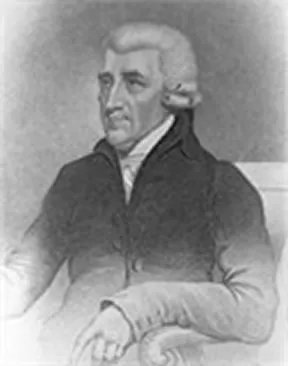
1705 - 1778
7th Great Grandfather – Colonel John Rutherford Walker III – (Scalped by Cherokee) Farmer and Gun Maker
Born: January 7, 1702 • Ulster, England then moved to Newry Down, Ireland
Death: September 23, 1778 • Walker Creek, Rockbridge, Virginia, USA
– When John Walker was born on 7 January 1702, in Wigtown, Wigtownshire, Scotland, his father, Captain John Walker II, was 26 and his mother, Katherine Jane Rutherford, was 20. He married Ann Houston on 20 March 1733, in Chester, Pennsylvania, British Colonial America. They were the parents of at least 5 sons and 8 daughters. He lived in Scott, Virginia, United States in 1770 and Chester, South Carolina, United States in 1790. His occupation is listed as farmer & gunmaker in Virginia, British Colonial America. He died before 17 November 1778, in Washington, Virginia, United States, and was buried in Washington, Virginia, United States.
– Married, about 1734, Ann Houston, who may have been a sister of William who built Houston’s Fort on Big Moccasin Creek in Scott County.
– John Walker, came first to Augusta County [Virginia] and later to Rockbridge, where they settled and lived on a creek named for them and which still carries the name of Walker’s Creek.
– During the first stages of the conflict (border wars of 1750s) the most famous Indian fighter of the (Walker) clan was John.
– Leaving Rockbridge County, John Walker arrived on the Clinch in the year 1773, and settled on a 300 acre tract of land at the “sink” of Sinking Creek between Castlewood [Castle’s Woods] and Dungannon. This tract of land he named “Broad Meadows.”
– Upon arrival on the Virginia frontier, John Walker was some 68 years old and had undoubtedly followed his children in their westward wanderings. Despite his advanced age, when he arrived on the Clinch he lived to see his son and daughter-in-law slain by the Indians, and his daughter and grandson carried into captivity and who had not returned at the time of his death.
– By 1788 this John Walker was listed in the community records as a ranger, that is, a man detailed to stay more or less permanently in the woods to wait for and deal with Indian raiders.
– In addition to ranging, John Walker, along with at least two of his brothers, Samuel and James, fought at Point Pleasant, one of the most crucial pitched battles of the border wars.
– In 1778, when he was seventy-three years old, he and his second son, Samuel, went off hunting or exploring in the Clinch River valley along what is now the boundary between Virginia and Tennessee. There the two men were caught and scalped by the Cherokee.
– He died sometime between Sept 23rd and Nov. 17, 1778. His will bearing date of Sept 23rd, (no year given, but presumed) was probated Nov. 17, 1778. The known children of John and Ann Houston Walker were: Susanna, Mary, Jane, Hetty, Ann, Martha, Margaret, John, and Samuel.
(from: Pioneer Settlers of The Clinch, by Emory L. Hamilton, Clinch Valley Times, St. Paul, Virginia, Oct. 10, 1967)
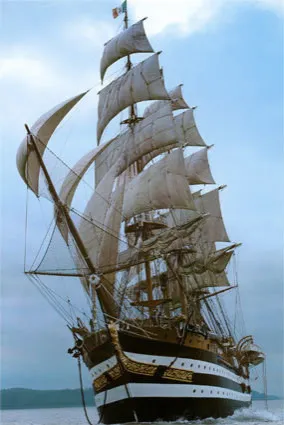
John Rutherford Walker Immigrated to the United States
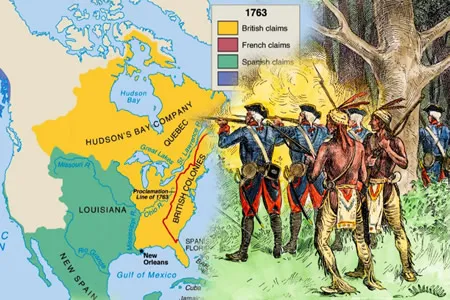
Border Wars 1750s - French and Indian Wars
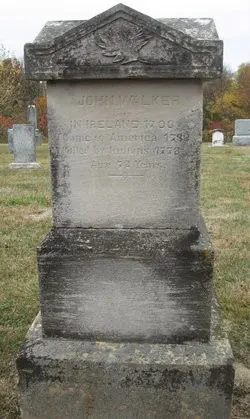
Inscription: Came to America 1732. Killed by Indians 1778. Age 72 years.
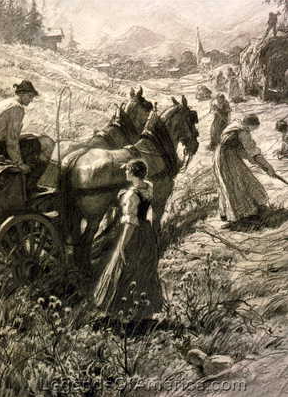
Nancy Ann Houston Walker
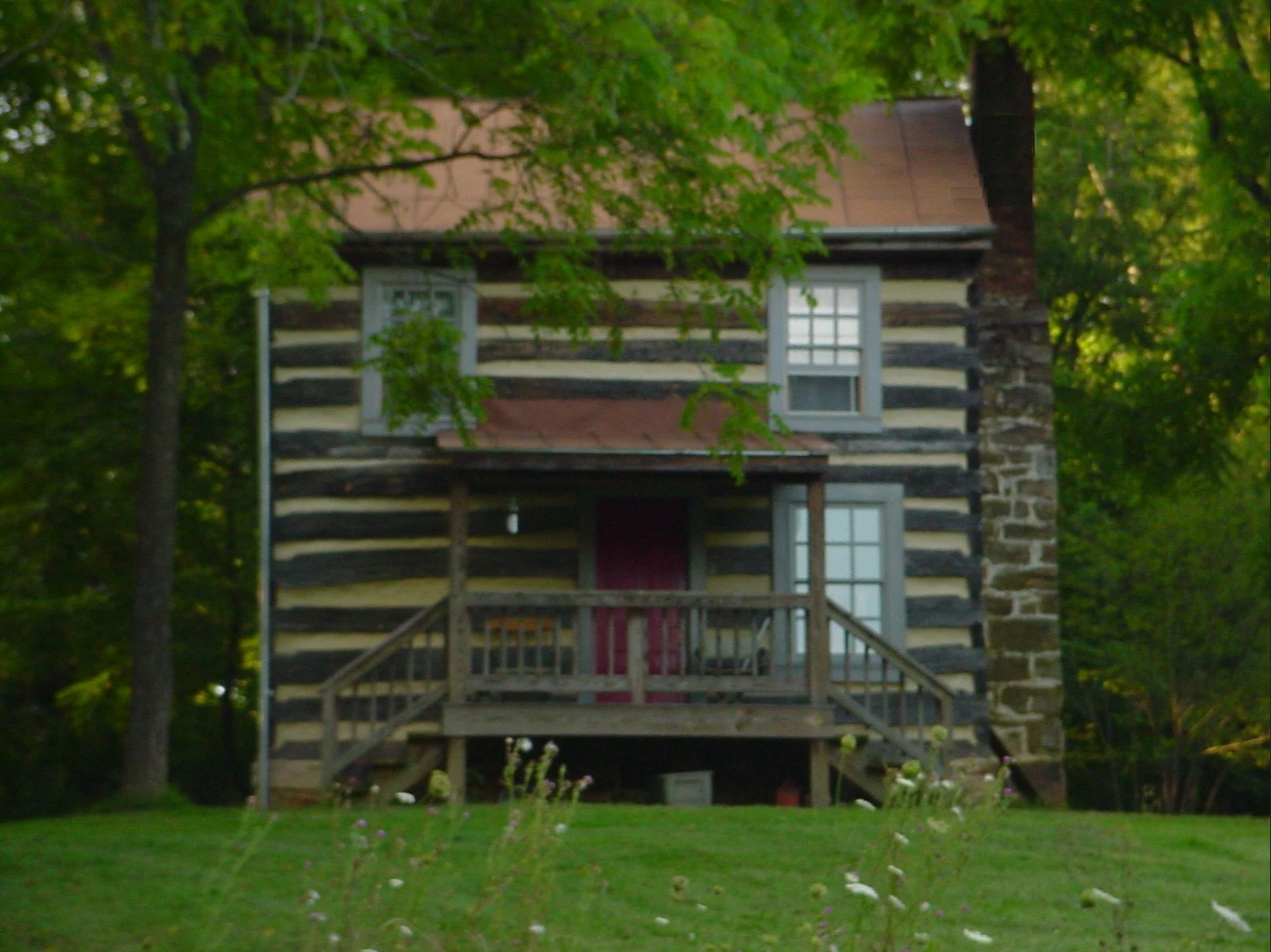
Walker homestead on Walker's Creek in Rockbridge County, Virgina
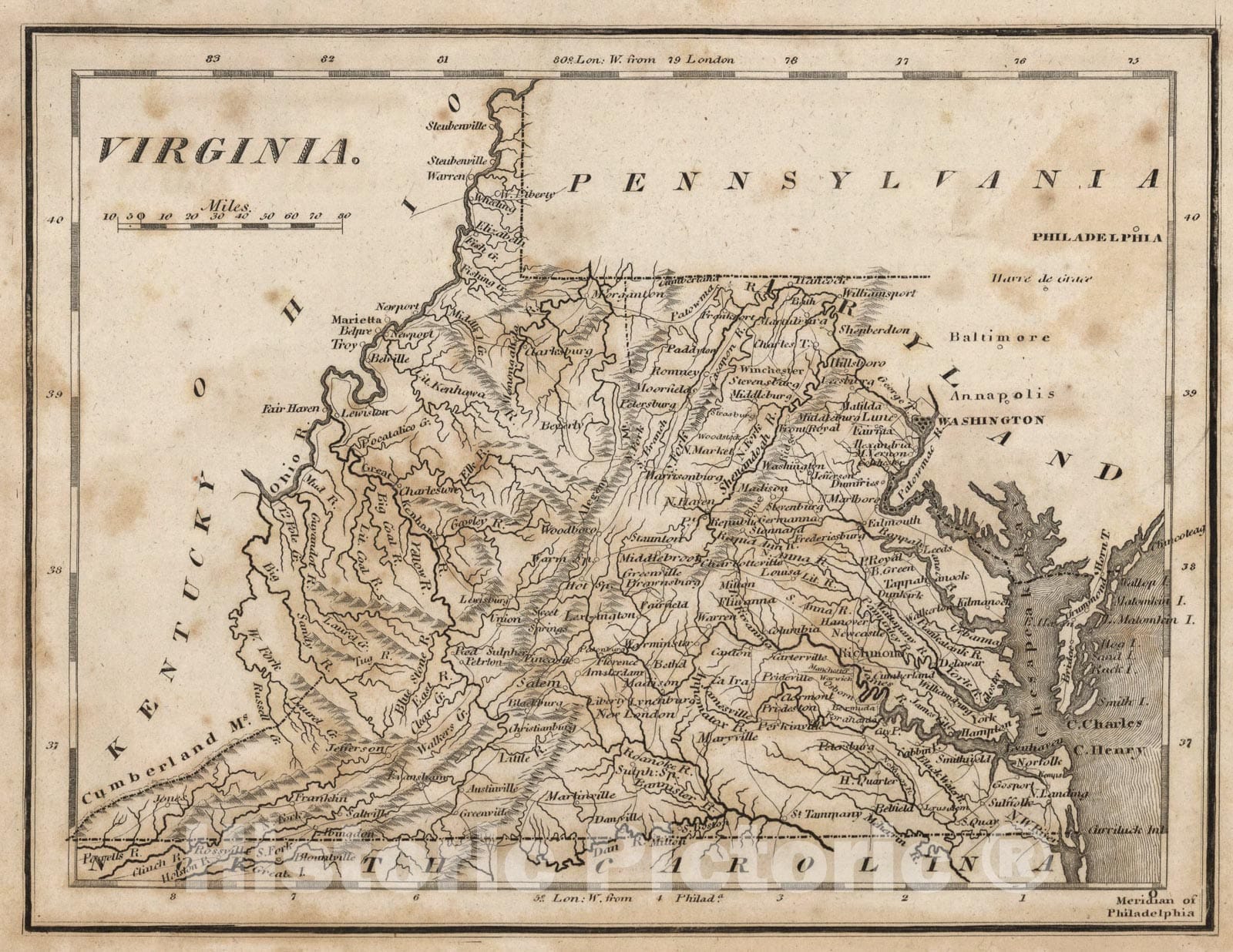
Old Virginia Map Showing Walkers Creek
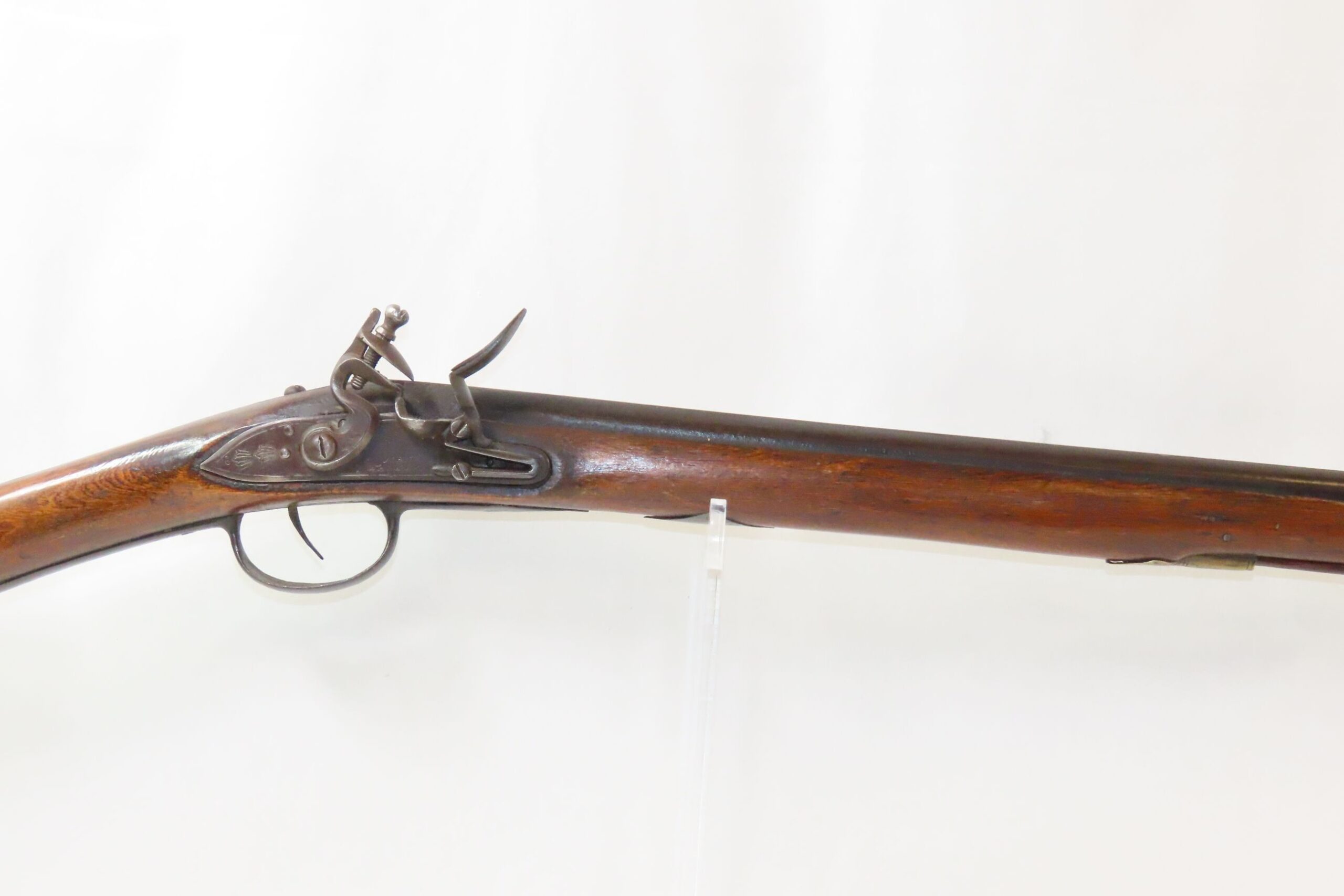
John-Walker-Percussion-Militia-Musket
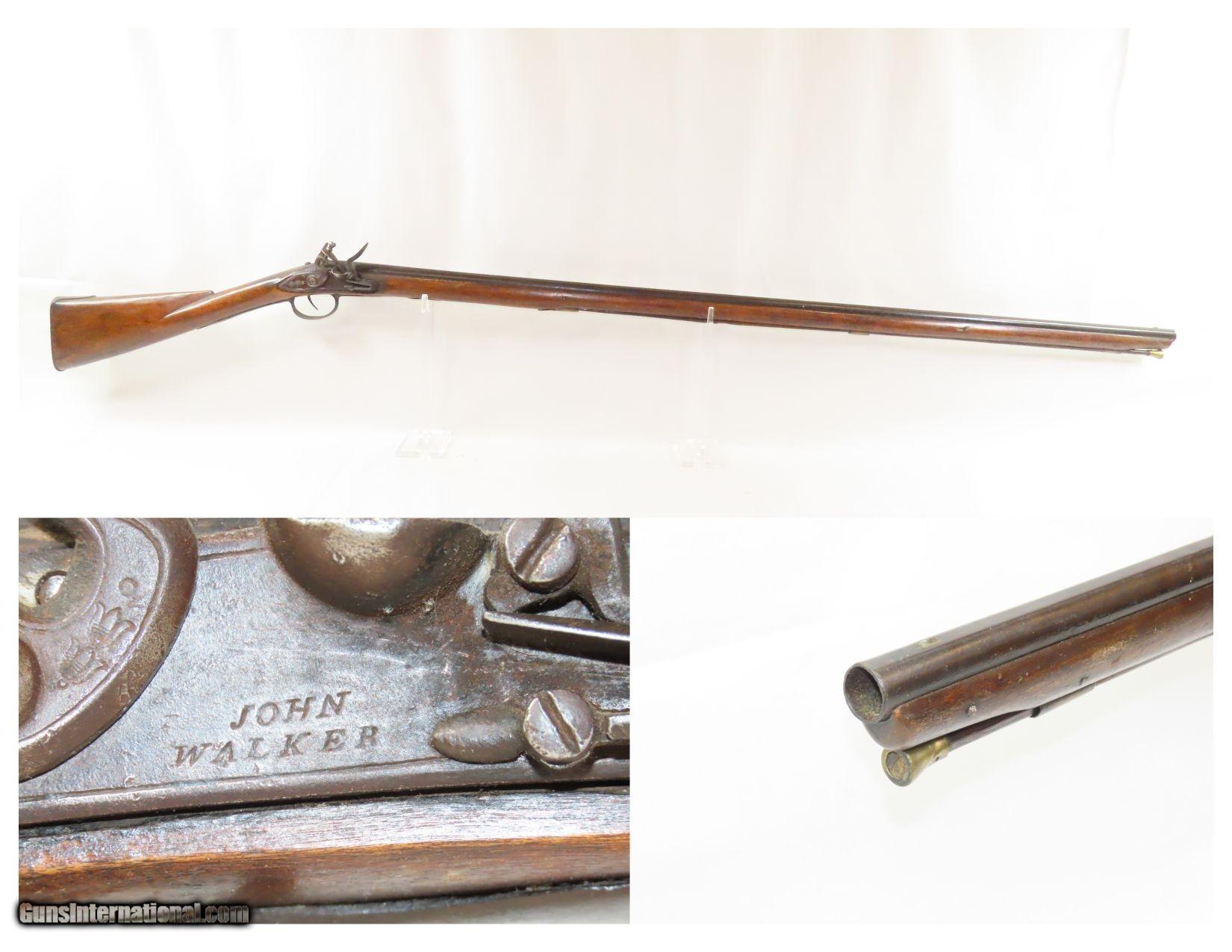
1680 - 1734
8th Great Grandfather – Captain John Alexander “GunMaker” Walker ll
Born: March 17, 1680 • Wigtown, Scottland
Death: September 1734 • Chester County, Pennsylvania
– The times were hard in 1712 and many went hungry in the highlands. John Walker (1680) his wife Katherine Rutherford (1685) and brother Alexander Walker (1682) moved from Wigton, Scotland to Newry Down, Ireland in 1712 in the midst of a conflict between James Graham of Montrose and Robert “Rob Roy” MacGregor.
– John Walker being Presbyterians would have naturally sought out a related church group, such as Rev. James MacGregor. Brother Alexander and wife Martha decided to explore the new world leaving their 3 young children with John on the agreement they would send word when they had found an acceptable settlement.
– John Walker having settled in Newry, Ireland, with his family and Alexander’s children, sailed from Strangford Lough, (district) Down, Ireland in May 1729, on board a vessel thought to be commanded by the English Captain, Richard Walker of Woburn Massachusetts, with a group of 28 to 30 people and disembarking on Dock Street in Philadelphia in August 02 of that year (others say Maryland). Soon rejoining his brother Alexander, they eventually settled in Chester County, Pennsylvania. Records show that Katherine’s nephew Thomas Rutherford arriving in Philadelphia in 1729, making me believe they may have traveled together. Katherine was one of the 8 children of John Rutherford and Isabella Alleine, who settled in County Down, Ireland.
http://www.josephrwalker.com/Rutherford.htm
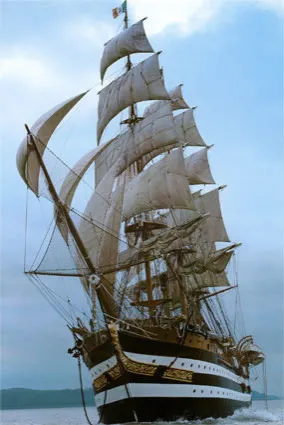
Captain John Alexander Walker ll Immigrated to the United States
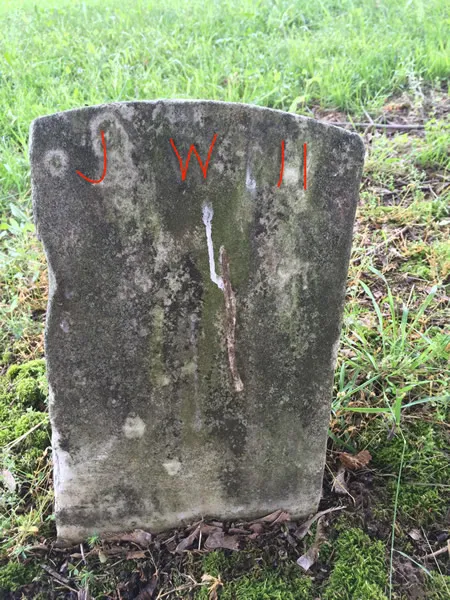
8th Great Grandfather - Captain John Alexander Walker ll - Head Stone
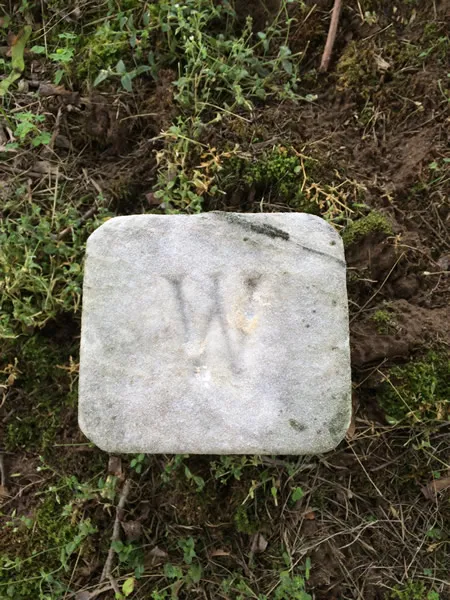
8th Great Grandfather - Plot Marker

John Walker Rifle
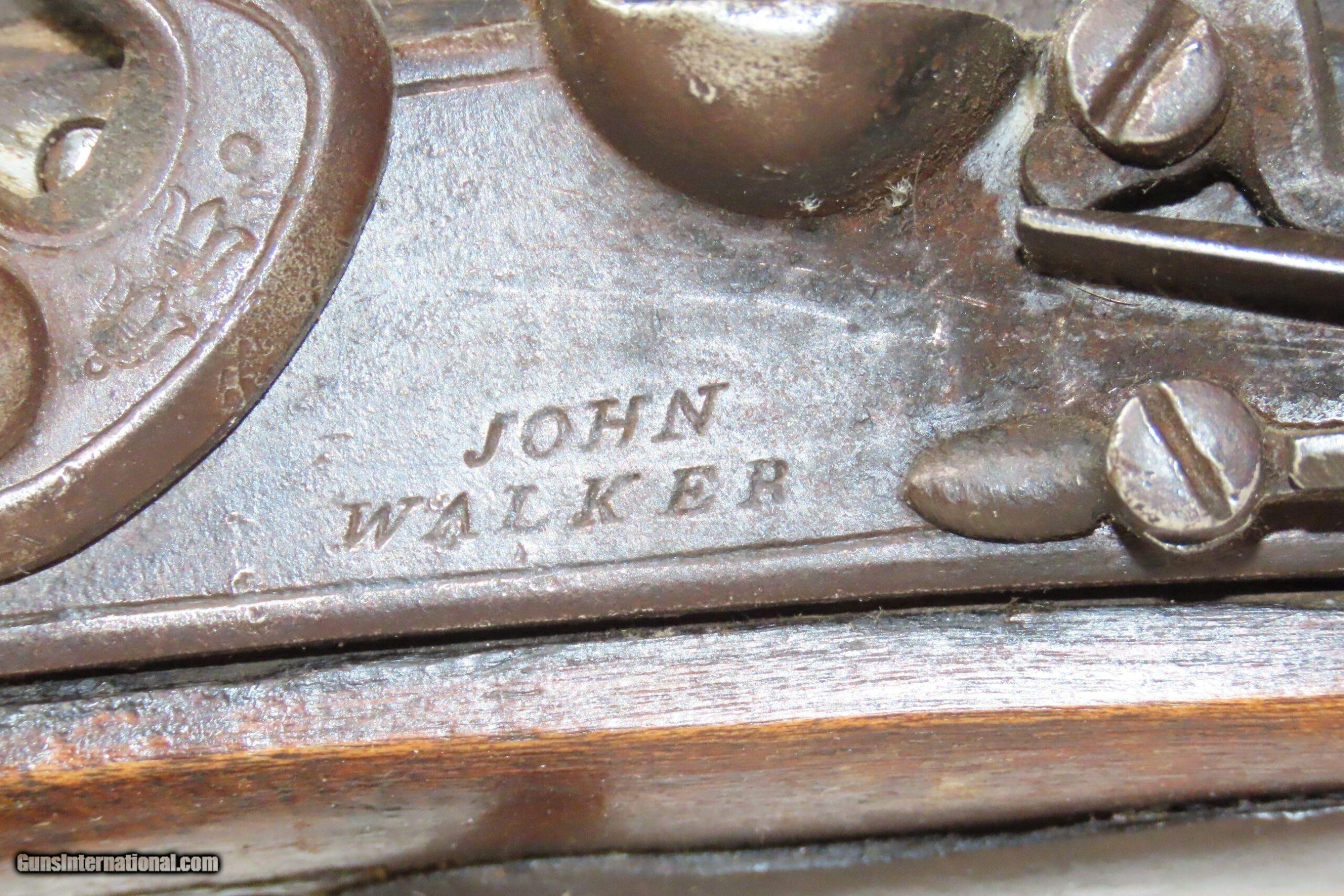
John Walker Rifle
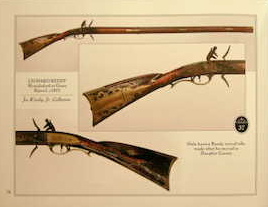
John Walker Rifle
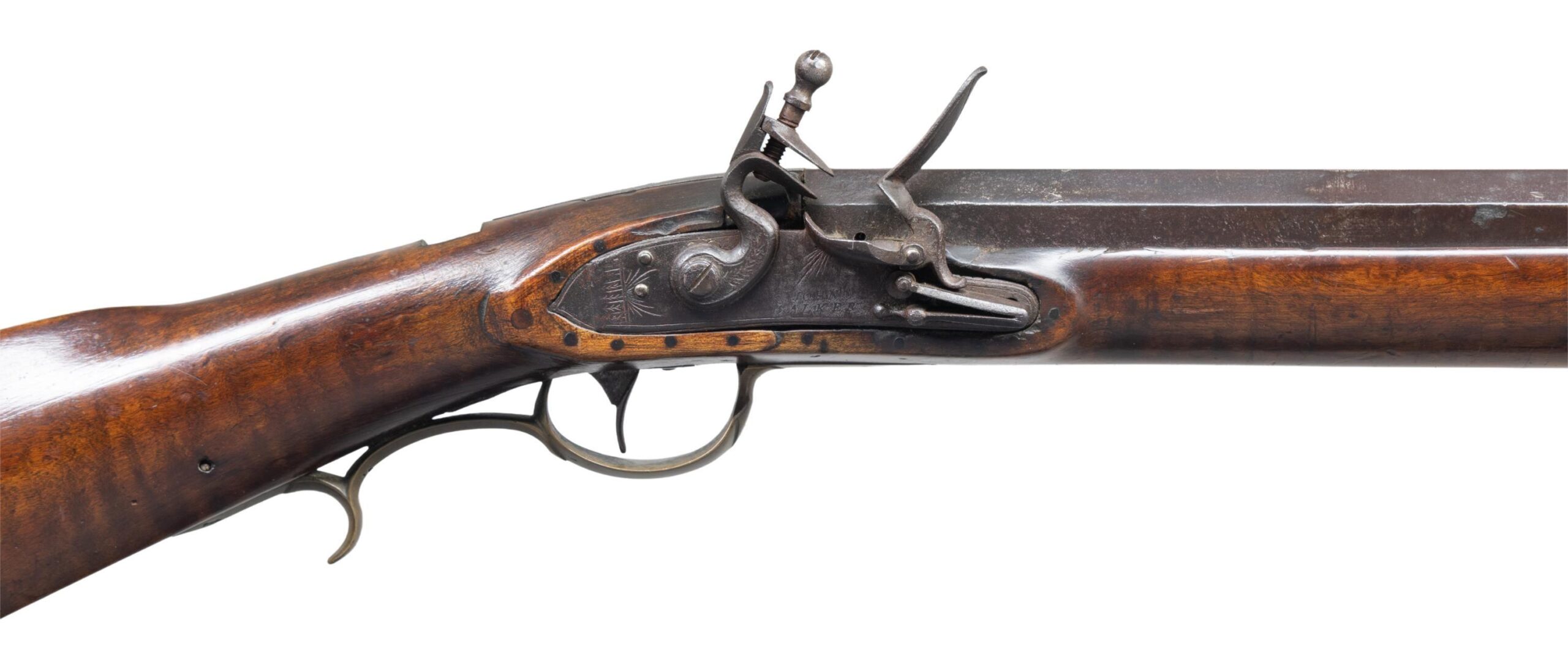
John Walker Rifle
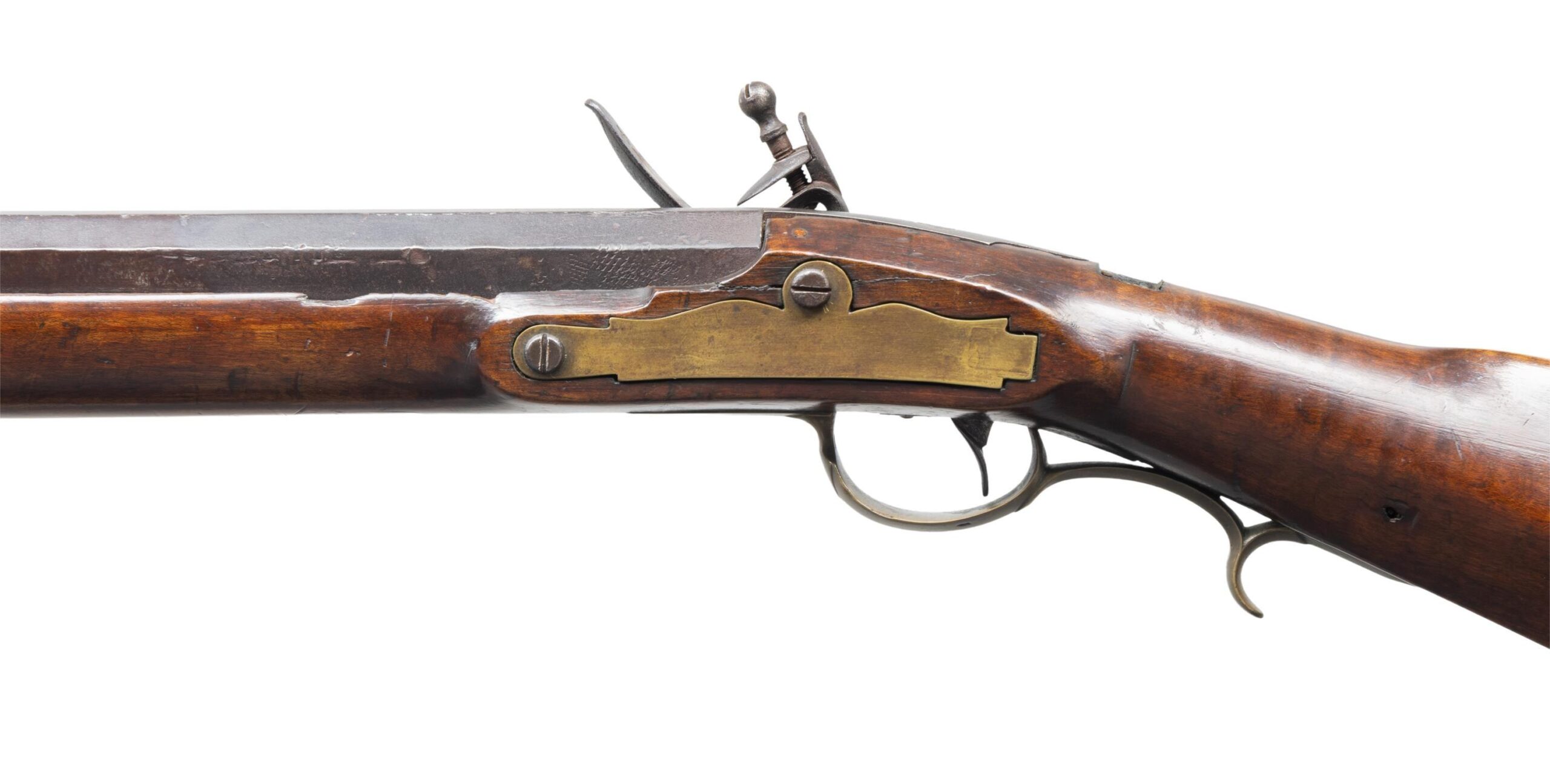
John Walker Rifle

John Walker Rifle
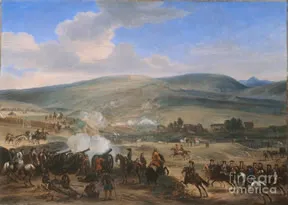
1668 - 1726
9th Great Grandfather – John Alexander Walker I – Lieutenant
Born: 1668 • Donaghmore, Tyrone, Northern Ireland
Death: October 10, 1726 • New Castle County, Delaware, USA
– Baptised Derry Cathedral, 2 Apr 1668.
– Educ. The Royal School, Armagh. Trinity College Dublin, matriculated 1 Oct 1685.
– Present at Battle of the Boyne, 1690. Battle of the Boyne, 1690 ⚔️ When the balance of power in Europe changed forever. Commissioned Ensign, then Lieutenant, 30 Apr 1691.
– Appointed with his brother Robert to Joint Clerk of the Markets of Ireland, 12 Dec 1693.
– Appointed Collector of Customs, Cavan, Armagh and Dundalk, Co. Louth, c.1721.
m. 1689 Jane Staples, daughter of Sir Alexander Staples, 4th. Bt., of Lissan, Co. Tyrone.
Battle of the Boyne, 1690 ⚔️ When the balance of power in Europe changed forever
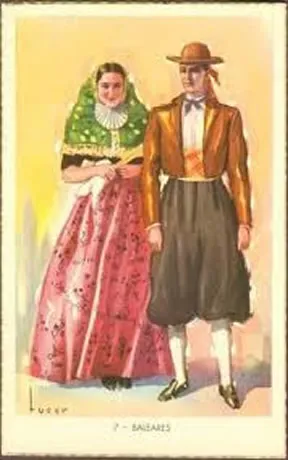
1680 - 1767
8th Great Grandfather Maternal Line – Juan Curbelo – One of 16 Families to start the village of of San Antonio 1731
Born: 1680 • Lanzarote, Canary Island, Espagne
Death: April 6, 1767 • La Villa de San Fernando de Bexar, San Antonio, Bexar County, Texas
– 2nd Family of 16 Families to start the village of of San Antonio 1731: Juan Curbelo
– Juan Curbelo (1680–1760) was a Spanish politician who served as the sixth and eighth mayor of San Antonio, Texas in 1737 and 1739. His family arrived in San Antonio from the Canary Islands in 1731 with other Canarian families to populate the region.
From the Canary Islands (territory of Spain) on the ship “Espana,” Juan Curbelo and his family emigrated to the new province of Texas (in northern Mexico) and settled the Villa of San Antonio de Bexar, arriving on 9 Mar 1731.
Juan Curbelo, son of Domingo Curbelo and Maria Martin Enriquez, native of Lanzarote, fifty [fifteen] years of age, tall, broad-shouldered, full-faced, fair complexion, grey beard and hair, light brown eyes, black eyebrows, rather bald at the temples, sharp nose. His wife, Gracia, was described as being of mid height with a dark complexion, black eyes, hair and eyebrows, large face and aquiline nose.
On 20 Jul 1731, Juan was appointed Second Councilman (Regidor), his son-in-law Vicente Alvarez Travieso was appointed Sheriff and another son-in-law Jose Francisco De Arocha was appointed Secretary and Notary Public. These appointments were made by Captain Juan Antonio Perez De Almazan, as instructed by King Phillip V of Spain.
On 31 May 1736, Juan was granted land on Soledad Street for the purpose of raising corn and beans–the government to receive one-third of the crops.
– The Canary Islanders
Earliest civilian colonists of San Antonio, this nucleus of pioneers from the Canary Islands formed the first organized civil government in Texas and founded the village of San Fernando de Bexar in 1731.
Following a sea and land voyage of over a year, these weary travelers arrived at the Presidio (Fort) of San Antonio early on March 9, 1731. Totaling 56 persons, they had emigrated to Texas from the Spanish Canary Islands near Africa, by order of King Philip V.
On July 2 they began to lay out a villa (village), choosing a site on the west side of the Plaza de las Islas (present Main Plaza) for the church and a site on the east side for the Casa Real (government building). On July 19 the captain of the Presidio, Juan Antonio de Almazan, read to the islanders the decree of the Viceroy naming them and their descendants “Hijos Dalgos” – persons of nobility.
The heads of the 16 families who settled in San Antonio were:
Juan Leal Goraz, Juan Curbelo, Juan Leal, Antonio Santos, Jose Padrón, Manuel de Nis, Vicente Alvarez Travieso, Salvador Rodriguez, Jose Leal, Juan Delgado, Jose Cabrera, Juan Rodriguez Granadillo, Francisco de Arocha, Antonio Rodriguez, Lorenzo and Martin de Armas, and Felipe and Jose Antonio Perez.
– Determined, Driven, and Resilient
In August of 1730, ten Canary Islander families land in Veracruz. Determined, driven, and resilient, these ten families set out on foot, traveling more than 1100 miles over six months to settle in this foreign land. Over the first few months of their journey, the families expand from ten to sixteen, some losing their lives on the trip and others born along the way. When the Canary Islanders finally land in what is now known as San Antonio, 56 individuals from 16 families would remain. Most of these settlers were from Lanzarote.
You’ll find a list of these 16 families here.
In the early decades of the 1700s, France, Spain, Portugal, Holland, and England reached into all corners of the globe. While Spain arrived in the New World first, France and England soon followed and brought their centuries-long rivalries with them. France controlled lands in and around the Mississippi River, including the mouth at the Gulf of Mexico, and extended to the Red River to the west, where the Spanish state of la Provincia de Tejas began. But as the French and English colonies grew in size, Spanish King Philip V grew concerned that the French would creep further along the Gulf Coast into Spanish lands. In 1730, the monarch put out a call to his subjects, looking for volunteers to grow the colony in New Spain.
The Invitation
The Canary Islands are found 62 miles west of the African continent. Spain, the great sea power, colonized the islands by force, and fought the French and Dutch for control. The Spanish colony in present-day Texas had its share of missions, hoping to spread Christianity to the natives, and provide aid to early colonists on the lawless frontier. King Philip V invited Canary Island residents to emigrate to the small community in present-day San Antonio, Texas to deter French invasion. The king paid for travel expenses, and paid them more on arrival. The journey took the original 16 families across the Atlantic Ocean to Cuba, then on to Vera Cruz, Mexico, then up the Texas Coast, and on to San Antonio de Béxar, where the so-called Isleños would ultimately establish the first city government and permanent Spanish settlement.
Juan Curbelo (Texan settler) – Wikipedia
Canarian Americans – Wikipedia
How to Stop a French Invasion: Tejano Patriots in Frontier Texas – Yesterday’s America
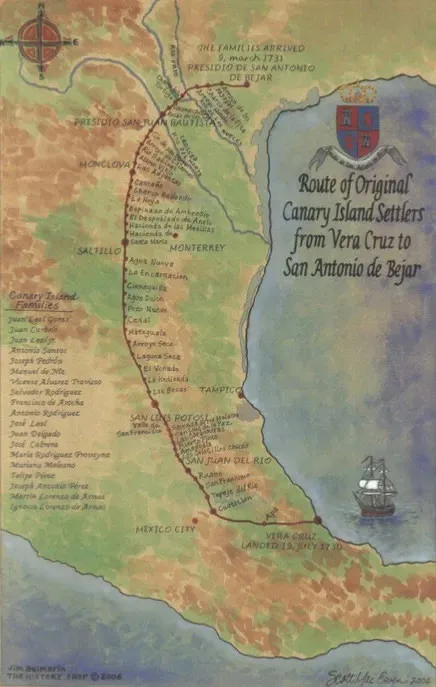
Map of Canary Islanders from Vera Cruz to Texas
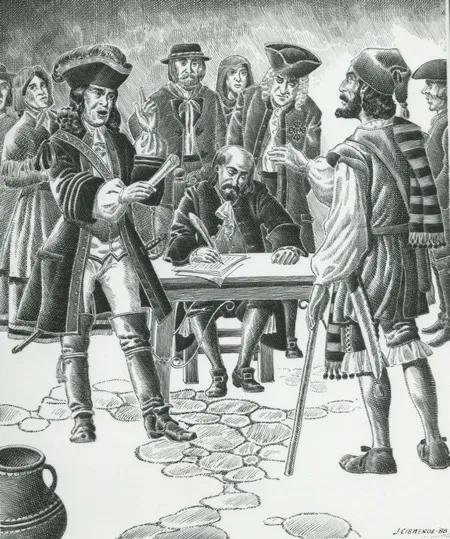
Canary Island settlers took the long way around to get to what is now Texas
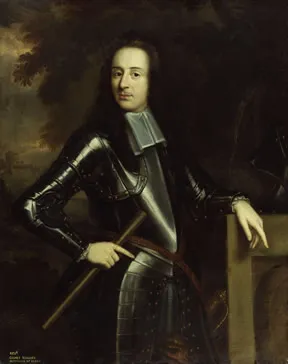
1645 - 1690
10th Great Grandfather – Dr. George Walker III Governor of LondonDerry
Born: 1645 • Wigtown, Wigtownshire, Dumfries and Galloway, Scotland, United Kingdom
Death: 1 JUL 1690 • Battle of Boyne, Londonderry, Ireland, Buried in Donaghmore, County Tyrone, Ireland (Now Northern Ireland).
Walker’s Monument was a 100 ft obelisk sitting on the Walls of Londonderry, overlooking the Bogside. On top was a statue of Rev George Walker who was the Governor of the City at the time of the siege in 1689.
– Here is the transcription of the plaque text:
This MONUMENT was erected to perpetuate the memory of the Rev. GEORGE WALKER, who aided by the garrison and brave inhabitants of this City, most gallantly defended it through a protracted siege, viz., from the 7th Dec. 1688, O.S., to the 12th of August following, against an arbitrary and bigoted Monarch, heading an army of upwards of 20,000 men, many of whom were foreign mercenaries, and by such valiant conduct in numerous sorties, and by patiently enduring extreme privations and sufferings, successfully resisted the besiegers, and preserved for their posterity the blessings of civil and religious liberty.
This plaque commemorates George Walker’s leadership and the bravery of the defenders of Derry during the Siege of 1689, which was a pivotal event in securing Protestant control in the region and maintaining civil and religious freedoms.
– This is the statue of George Walker located in Derry (Londonderry), Northern Ireland. George Walker was a prominent figure during the Siege of Derry in 1688-1689, where he played a key role in defending the city against the forces of King James II. The siege is a significant event in Irish history, particularly in the context of Protestant and Catholic tensions. The statue was historically placed on the city walls of Derry and is part of the city’s rich cultural heritage. The cannons and plaques nearby further commemorate the defense of the city during the siege.
Rev. George Walker (c. 1643–1690).
Educ. Trinity College Dublin, B.A. 1662 (or Glasgow University).
Appointed Rector of Lissan and Desertlyn, Co. Tyrone, 16 July 1669.
Rector, Donoughmore, Co. Tyrone 9 Sep 1674–1690.
Governor at Siege of Derry, 1689.
Awarded £5,000 by King William III but unpaid.
Honorary D.D., Oxford University, 26 Feb 1690.
Killed and buried at Battle of Boyne, 1 Jul 1690.
Reinterred by his widow at Donoughmore Church, Castlecaulfield, Co. Tyrone, 1703. Reinterred during repairs, 1838.
m. c. 1666 Isabella Barclay (c. 1644–1705). Died Dungannon, Co. Tyrone.
George Walker (soldier) – Wikipedia
Rev. George Walker’s family | The Sinclairs
Rev George Walker (1645-1690) – Find a Grave Memorial
The Siege Of Derry 1689( BBC Documentary)
Rev. George Walker – Irish Biography
Biographical Notice of George Walker, Governor of Derry during the Siege in 1688. Part I on JSTOR
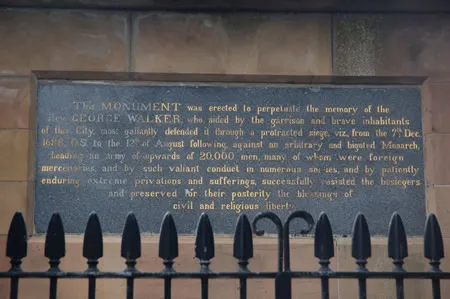
This MONUMENT was erected to perpetuate the memory of the Rev. GEORGE WALKER, who aided by the garrison and brave inhabitants of this City, most gallantly defended it through a protracted siege, viz.,
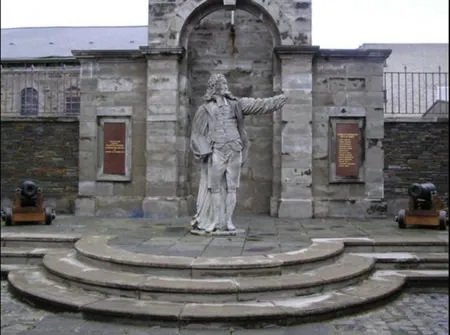
This is the statue of George Walker located in Derry (Londonderry), Northern Ireland. George Walker was a prominent figure during the Siege of Derry in 1688-1689, where he played a key role
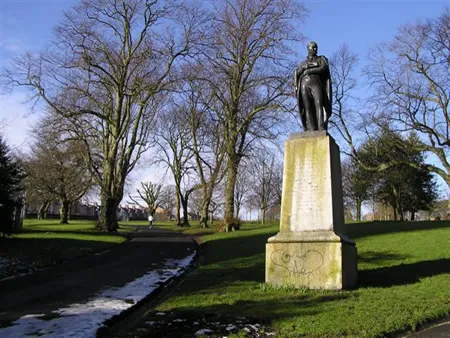
Rev George Walker statue at Brooke Park near to Londonderry County Borough, Derry, Creggan, Clooney Park and Foyle Hill, Ireland
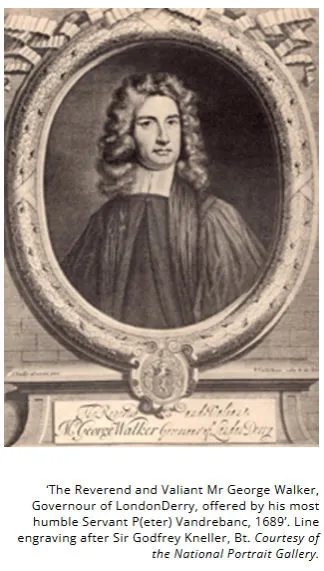
Reverend George Walker Defender of Derry
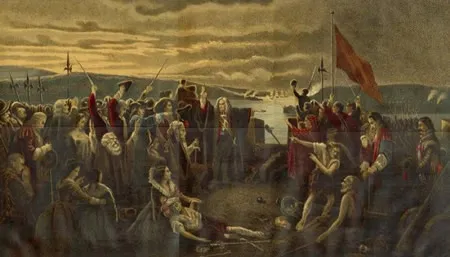
Scene showing the Reverend George Walker, (1618-1690), Governor of Derry, standing on the battlements of the city of Londonderry, Northern Irela
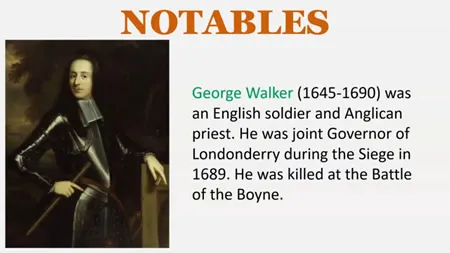
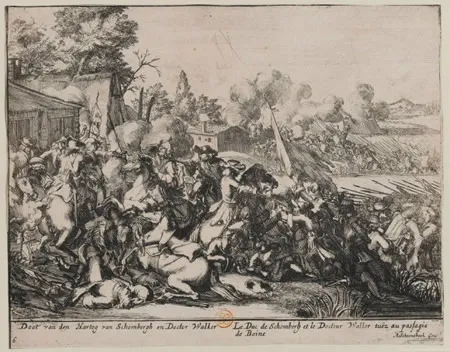
Le Duc de Schomberg et le Docteur Walker tues au passage de Boine
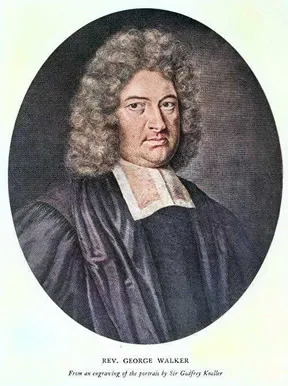
1603 - 1677
11th Great Grandfather – Rev George Walker II
Born: September 5th 1603 • Dublin, Dublin, Ireland (Josh Walker’s Birthday too)
Death: September 15th 1677 • Armagh, Co. Tyrone, Ulster, Province, Northern Ireland
– He occupied the important post of Joint-Governor within the city, as well as that of a Colonel in one of the city regiments.
Educ. Trinity College Dublin, B.A. 1621, M.A. 1624.
Appointed Rector, Badoney, Co. Derry, 13 Jan 1630;
Cappagh, Co. Derry, 20 Sep 1636.
Fled to England 1641.
Rector, Kirk Deighton and Wighill, 1644.
Returned to Ireland 1654.
Rector, Hillsborough, Co. Down. Archdeacon of Down.
Rector, Cappagh and Badoney, Co. Derry, 1660.
Chancellor, Cathedral of Armagh 1662.
Rector of Donoughmore, Co. Tyrone, 1662–1674.
D.D., Dublin University, 1663.
Buried parish church of Kilmore, Co. Armagh.
Inscription on plain stone in the floor in front of the chancel:
GEORGE WALKER, D.D.;
CHANCELLOUR OF ARMAGH & RECTOR OF KILMORE,
WHO DYED YE 15TH DAY OF SEPTEMBER
ANNO DOM. 1677.
m. c. 1642 Ursula Stanhope (c. 1654), eldest daughter of Sir John Stanhope of Stotfold, Hooton Pagnel, Yorkshire and Melwood Park, Isle of Axholme, Lincolnshire, by Mary, daughter and co-heir of William Hawley of Stotfold, Yorkshire. Buried Kirk Deighton, Yorkshire.
GOVERNOR WALKER
When the Province of Ulster was putting itself in a posture to resist the schemes of Tyrconnell in the spring of 1689, Mr. Walker took some part in planting a garrison at Dungannon, and in supplying it with provisions; but acting on the orders of Lundy, the garrison and himself, without waiting for the enemy to come forward, withdrew from a post that was judged untenable, and retired to Derry. He had been stationed at the Long Causeway on the day that King James’s army crossed the Finn at Clady, and having with his detachment kept his ground a little longer than some of the others, he found, when he reached Derry, that Lundy had shut him out of the gates. After the revolt in the city had disbanded Lundy and called new leaders to the front, Walker was nominated by Governor Baker as his Assistant, with the consent of the Council of War; and from that time
Biographical Notice of George Walker, Governor of Derry during the Siege in 1688. Part I on JSTOR
St Patrick’s Church of Ireland Cathedral – Armagh – Discover Northern Ireland
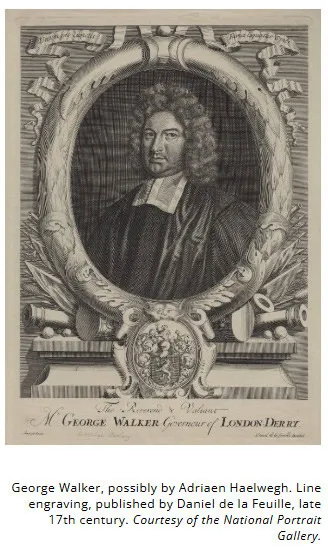
Reverend George Walker II
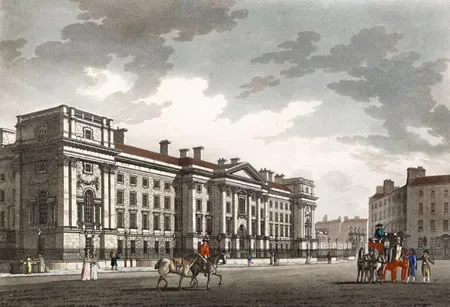
Trinity College, Dublin Front
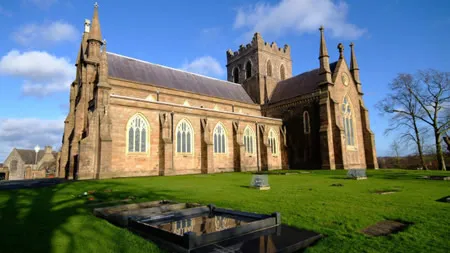
Saint Patrick founded his main church here on the Hill of Armagh in 445AD. There has been a Christian church on the site ever since. Although the building has been renovated many times, the basic shap
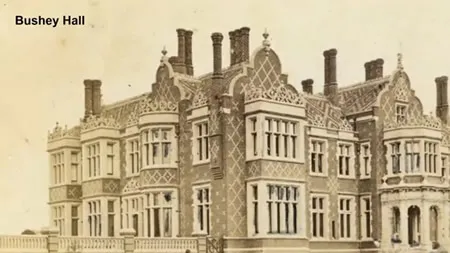
Sir George Walker Estate - Bushy Hall
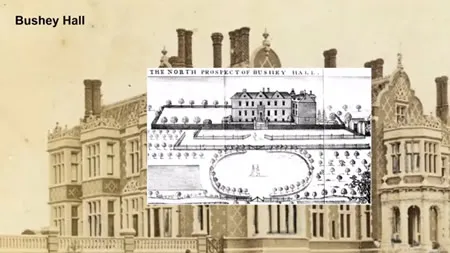
Sir George Walker Estate - Bushy Hall w Sketch
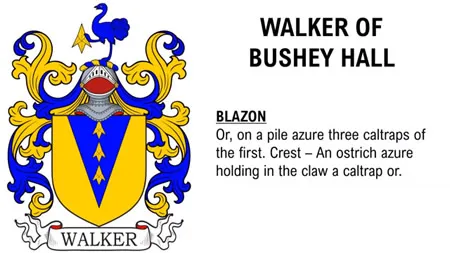
Coat of Arms - Walkers of Bushy Hall
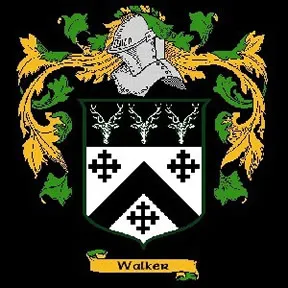
1566 - 1642
12th Great Grandfather – Rev. George Walker
Born: January 1566 • Ruddington, Nottinghamshire, England, United Kingdom
Death: July 1 1642 • Country Londonderry, Ulster Province, Ireland
– Rev. Gervase Walker, M.A. (c. 1566–1642).
Educ. Nottingham High School;
Caius College, Cambridge.
Curate, London 1592.
Rector, Great Staughton, Huntingdonshire 1594–1615.
Went to Ireland 1616–1617.
Rector, Badoney, Co. Derry 1622–1626, Cappagh, Co. Derry 1622–1636.
Buried Derry Cathedral, 1 July 1642.
m. c. 1594
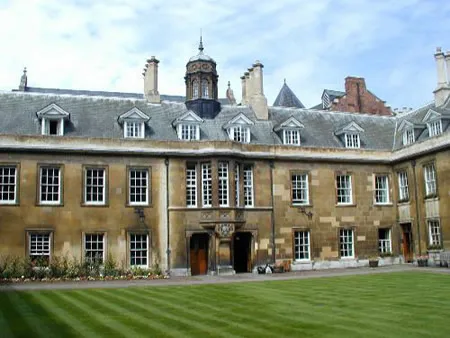
Caius College Cambridge
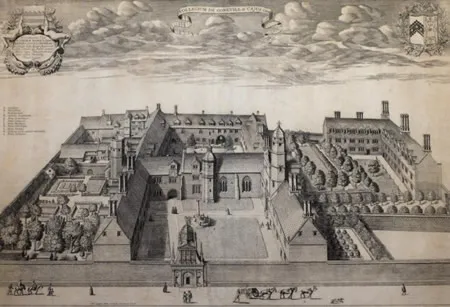
Caius College Cambridge 1585
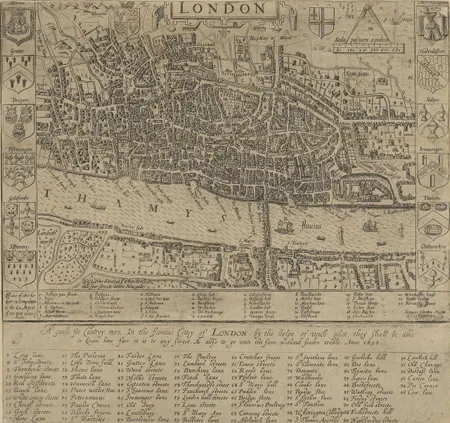
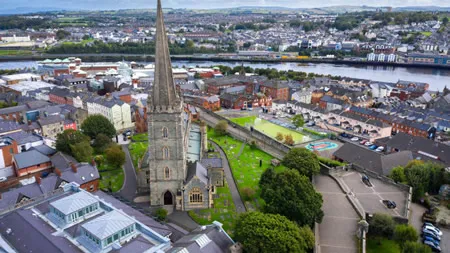
Buried Derry Cathedral
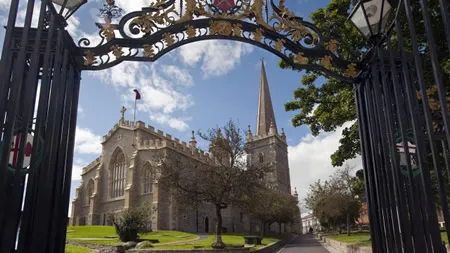
Derry Cathedral
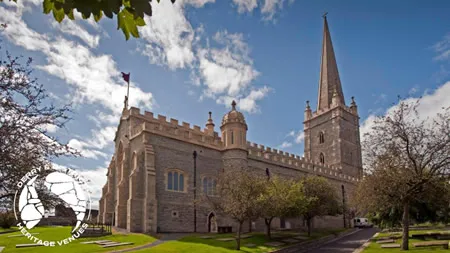
Derry Cathedral
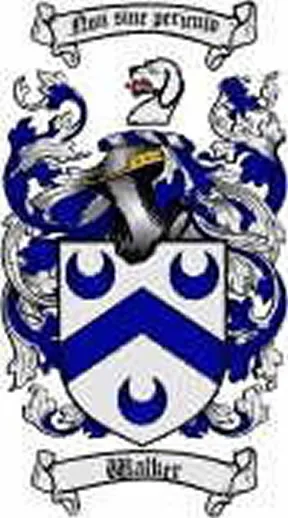
1538 - 1592
13th Great Grandfather – Sir Dr John Thomas Fairholm Walker MD of Ruddington
Born: August 1538 • Nottingham Unitary Authority, Nottinghamshire, England
Death: July 23 1592 • Ruddington, Nottinghamshire, England
Married: Lady Isabell (Isabella) Abell Walker – (1539-1592)
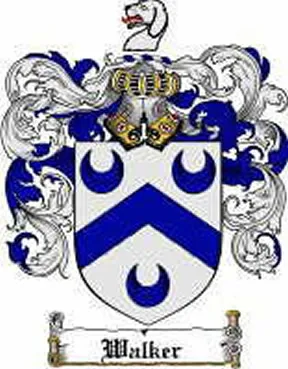
1502 - 1575
14th Great Grandfather – Sir John Lawrence Walker
Born: 1502 • Liversedge, Yorkshire, England
Death: September 26 1575 • St Ford, Fife, Scotland
Married: Lady Alexandra Ann Knuttson de Ruddington – (1513-1575)
John Walker (1) : Family tree by Troy LAING (woltar31) – Geneanet
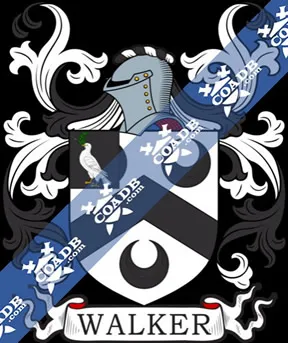
1454 - 1529
15th Great Grandfather – Sir Knight – William Willem Walker IV – Sheriff of Kent
Born: 1454 • Sharpenhoe, Central Bedfordshire, England
Death: 1529 • Liversedge, Yorkshire, England
– Sir William Walker IV was born in 1454 at Sharpenhoe, Bedfordshire England.
– He married in 1479 to Lady Joanne Norton the daughter of Sir John Norton (1428-1489) and Lady Maude Anna DeGrey (1423-1461). Lady Joanne Norton was born in 1461 at Sharpenhoe, Bedfordshire England.
– Together Sir William IV and Lady Joanne Norton Walker had five children as follows:
- Sir George Townsand Walker (1490-1529),
- Thomas (1490-1540),
- Agnes (1495),
- William V (1498-1562),
- John (1502).
– Sir William Walker IV died in 1529 at Liversedge, Yorkshire England.
Lady Joanne Norton Walker dies in 1548 at Sharpenhoe, Bedfordshire England. Little is known about his siblings Mary and Frederick.
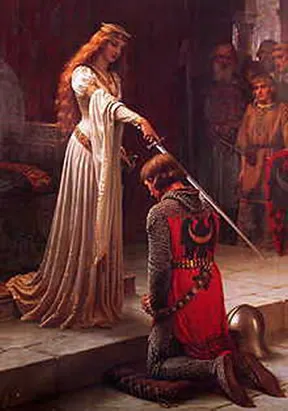
1424 - 1455
16th Great Grandfather – Sir Knight – William Walker III
Born: 1424 • Streatley, Bedfordshire, England
Death: May 22 1455 • Battle of St Albans, Hertfordshire, England
– William Walker III was born on his family’s estate in 1424 in Rimpton, Bedfordshire, England. He was the son and heir of Sir William Walker II (1399-1461) and his wife Alice (Ellis) Walker (1400-1466).
– In 1450, William married Alice Guildford, b: 1428 in Halden Manor, Rolvenden, Kent, England.
– They had 3 children:
- Mary “of Lambeth,” b: 1450 in Lambeth, Surrey
- Frederick “of Camberwell,” b: 1452 in Camberwell, Surrey
- William IV “of Sharpenhoe” b: 1454 in Sharpenhoe, Bedfordshire
Sir William Walker III died May 22, 1455, fighting as a knight for King Henry VI at the Battle of St. Albans, Hertfordshire, but was buried in his village of Sharpenhoe, Bedfordshire, England. This battle is considered as the start of England’s Civil War, known as “The War of the Roses,” that ended England’s Plantagenet dynasty’s rule.
His wife survived his passing, retired to her natal Kent and died in 1461 in Speldhurst, Kent, England.
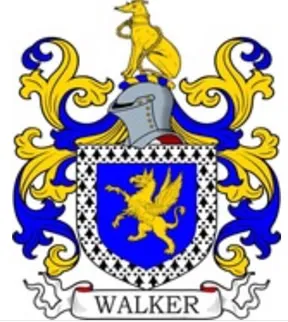
1399 - 1455
17th Great Grandfather – Sir Knight William Walker II Jr – Oxford University
Born: 1399 • Clapham Common, Surrey, England
Death: 1455 • Streatley, Bedfordshire, England
– Married Alice Ellis (1400-1466) Redhill, Surrey, England
– They had 3 children:
- Sir Knight William Walker III b: 1424
- Frederick Walker
- Mary Walker
– Who Was a Typical Oxford Student in the 14th Century?
In the 14th century, all students at Oxford, and every other medieval university, were men.
Only baptized Christians were allowed to be students at the university of Oxford during the medieval period; non-Christians were banned from attending.
Almost all of Oxford’s scholars were clerks, meaning that they held some form of position within the Christian Church, which they could use to help pay for their studies and living costs.
Those who had converted from Judaism to Christianity were allowed to attend the university. A Jewish convert was even employed to teach (Hebrew and Greek) at Oxford in 1321.
Students were supposed to be 16 before they could be allowed to study the Seven Liberal Arts at Oxford – this was a much higher age requirement than at the University of Toulouse, where students could begin at 10. Once at Oxford, students were required to study for between 5 and 6 years and then take an examination. The examination was only required if the students wished to gain their bachelor’s degree however, and many were content merely to study and did not want to gain an official degree.
University of Oxford – Wikipedia
Who Was a Typical Oxford Student in the 14th Century? | History Hit
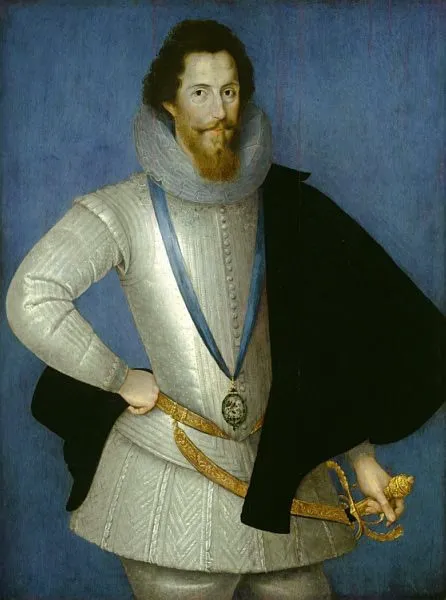
1399 - 1455 Sir Knight William Walker II Jr of Oxford University - 15th Great Grandfather
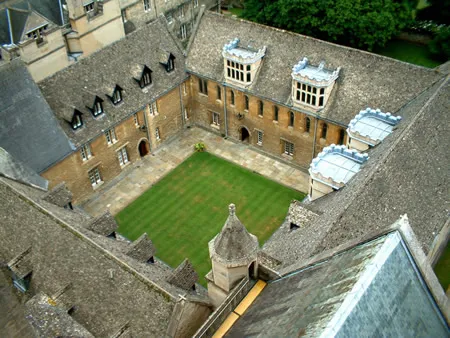
Merton College's Mob Quad, the oldest quadrangle of the university, constructed between 1288 and 1378
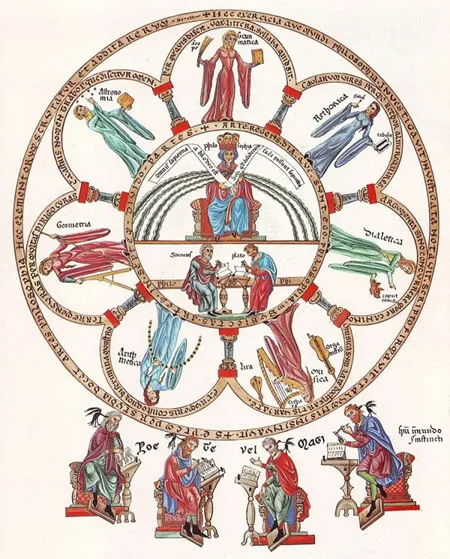
A twelfth century illustration depicting the seven liberal arts: grammar, rhetoric, and logic (the trivium) and geometry, arithmetic,
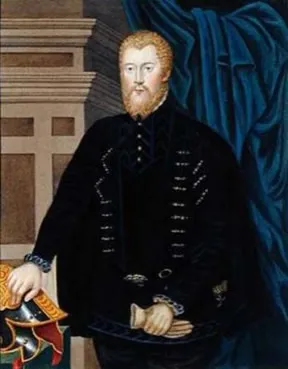
1370 -
18th Great Grandfather – Sir William Walter Walker I
Born: 1370 • Clapham, Surrey, England
Death: Wiltshire, England
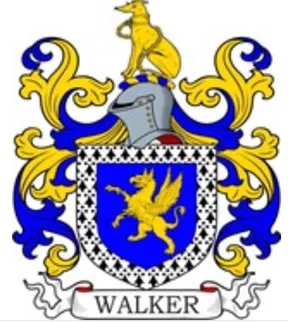
1325 - 1409
19th Great Grandfather – Simon Walter Walker
Born: 1325 • Membury, Devon, England
Death: 1409 • Ramsbury, Wiltshire, England
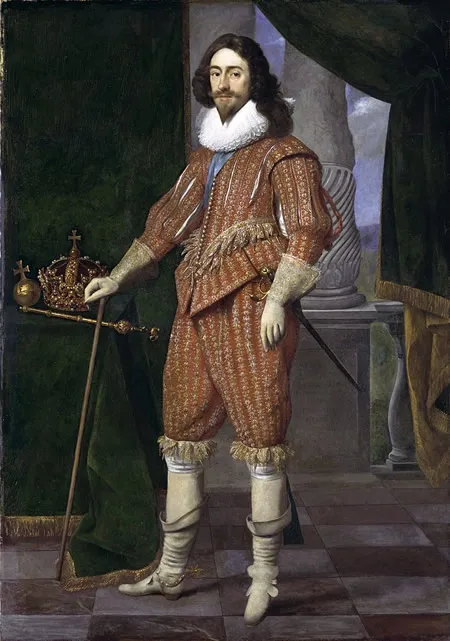
1325 -1409 Simon Walter Walker - 17th Great Grandfather
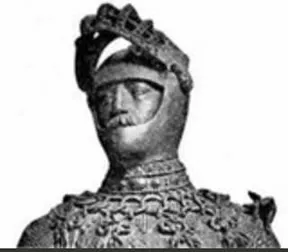
1305 - 1384
20th Great Grandfather – Sir William John le Walker
Born: 1305 • Membury, Devon, England
Death: 1384 • Membury, Devon, England
– Married Lady Elizabeth Atwater Walker (1307-1384) Membury, Devon, England
– They had 1 child, maybe more:
- Simon Walter Walker (1409 – 1325)
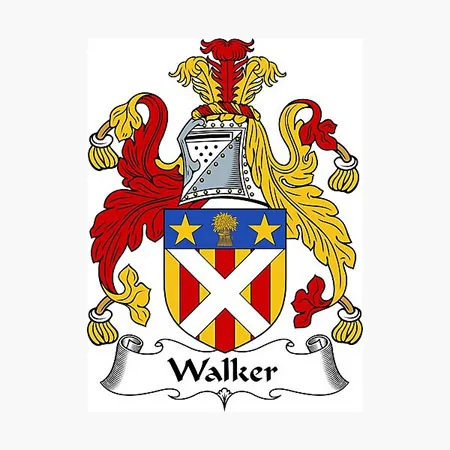
Sir William John le Walker Coat of Arms

